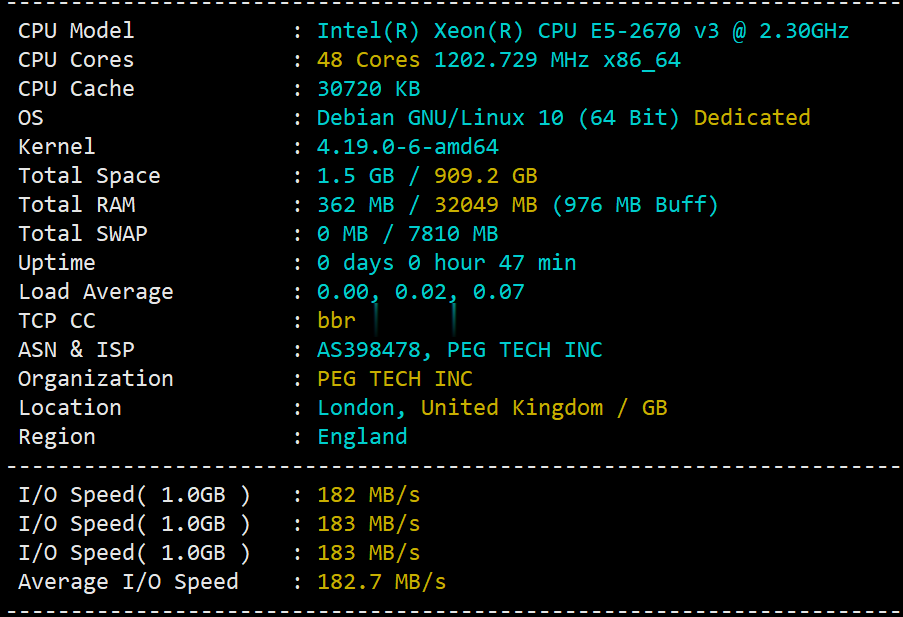9.cornerradius
cornerradius 时间:2021-02-18 阅读:()
ResidentialStreetStandards&NeighborhoodTrafficControl:ASurveyofCities'PracticesandPublicOfficials'AttitudesEranBen-JosephInstituteofUrbanandRegionalPlanningUniversityofCaliforniaatBerkeleyAbstractThefailureofthelocalstreetsystemtoprovidelivabilityandsafetyintheresidentialenvironmentcanbeseenintheapplicationofneighborhoodtrafficmanagementprogramsbylocalauthoritiestomitigatetrafficproblems.
Inordertofurtheridentifytheextentoftheconflictassociatedwith"livability"andgeometricaldesignofresidentialstreet,thefollowingissuesareexamined:(1)Existingandproposedresidentialstreetsstandardsandregulationsaspracticedbyvariouscitiesandtheirevaluationbypublicandcityofficials.
(2)Trafficproblemsassociatedwithresidentialstreetsandtheirmitigationthroughtrafficmanagementandcontrolprograms.
DataarecollectedfromPublicWorksandTrafficEngineeringDepartmentsof56Californiancitiesand19citiesnation-wide.
Thefindingsshowthatmostcitiesarestilladheringtopublishedstreetstandardsasrecommendedbydifferentprofessionalandfederalorganizations.
Althoughsomecityofficialsseetheneedtoamendcertainaspectsoftheirregulationsandcreateamoreflexibleframeworkforstreetdesign,mostofthembelievethatthecurrentpracticeissatisfactory.
Yet,theextantofresidents'complaintsabouttrafficproblemsontheirstreetsmightindicateaninconsistencybetweenprofessionalpractice,asmanifestedinstreetdesign,anditsactualperformanceasexperiencedbytheresidents.
Thiscanalsobeseenintheapplicationoftrafficcontroldevicesusedbylocalauthoritiestomitigatetheseproblemsofwhichthemostcommonaretheinstallationofspeedhumpsand4-waystopsigns.
Accordingtothecities'reportsthesetechniques,aswellastrafficdivertershavethemosteffectiveresults.
AcknowledgmentsThisresearchhasbeensupportedinpartbytheInstituteofTransportationStudiesattheUniversityofCaliforniaatBerkeley,andtheUniversityofCaliforniaTransportationCenter.
IamalsogratefulfortheguidanceofProfessorMichaelSouthworthatthedepartmentofCityandRegionalPlanningandLandscapeArchitectureattheUniversityofCaliforniaatBerkeley.
1INTRODUCTIONTheconceptofthestreetasaphysicalandsocialpartofthelivingenvironment,asaplacesimultaneouslyusedforvehicularmovement,socialcontactsandcivicactivities,haslongbeenarguedbymanyauthorssuchasKevinLynch,JaneJacobsandJ.
B.
Jackson.
Localresidentialstreetsinparticulararecentraltothefeelingof"community"and"belonging"withinaneighborhood.
Appleyard(1981)hypothesizedthatwhentrafficvolumesincreasebeyondwhatisconsiderednormalbylocalresidents,orvehiclespeedsincreasebecauseofstreetdesign,socialstreetactivitiesaregreatlyreduced,andthefeelingofwellbeingintheaffectedneighborhoodisthreatened.
Inordertoprotectlivabilityaswellastoprovideforefficientmovementofmotorvehiclesstreetsaregivenfunctionalclassifications.
AssuchTheInstituteofTransportationEngineersreportentitled,RecommendedGuidelinesforSubdivisionStreets,establishesthefollowingcriteriainthedesignoflocalstreetsystems:Safety-forbothvehicularandpedestriantraffic.
EfficiencyofService-forallusers.
LivabilityorAmenities-especiallyasaffectedbytrafficelementsinthecirculationsystem.
Economy-oflanduse,construction,andmaintenanceItfurtherelaboratesandprovidesthefollowingprinciples:Adequatevehicularandpedestrianaccessshouldbeprovidedtoallparcels.
Streetsshouldbedesignedtominimizethroughtraffic.
Elementsinthelocalcirculationsystemshouldnothavetorelyonextensivetrafficregulationsinordertofunctionefficientlyandsafely.
Planningandconstructionofresidentialstreetsshouldclearlyindicatetheirlocalfunction.
Thelocalstreetshouldbedesignedforarelativelyuniformlowvolumeoftraffic.
Localstreetsshouldbedesignedtodiscourageexcessivespeeds.
Pedestrian-vehicularconflictpointsshouldbeminimized.
Minimumamountofspaceshouldbedevotedtostreetuse.
Thereshouldbeaminimumnumberofintersections.
(ITE,1984)Although,ITErecommendedcriteriarefertoissuesoflivabilityandsafetyonresidentialstreets,manycitiesarefindingthemselvesunderpressuretofurtheraddresstheseissuesthroughthereductionofspeedandvolumeoftrafficonresidentialstreets.
Whiletrafficvolumeisoftenthe2resultofapoorlyplannedstreetsystem,safetyandexcessivespeedarerelatedtothestreet'sgeometricaldesign.
Thepracticeofconstructingrelativelywidecrosssectionsinresidentialstreetswherethereislittletraffic(lessthan1000tripsperday),permitsandencourageshighvehiclespeeds.
Highspeedsarealsoencouragedbypavementwidth,smoothness,flatcurvesandgoodsightdistancecalledforinstreetstandards1Thisrelationshipbetweendesignspeedandsightdistance,curveradius,andwidthhavebeenestablishedtoprovidemotorizedefficiencywhichisoftenincompatiblewiththeessenceofresidentiallivability.
Publishedgeometricalstreetstandardsdonotalwaysadheretothestatedprinciplesforresidentialstreetsystems.
Thefailureofexistinglocalstreetsystems,andthestreet'sphysicaldesign,toprovidelivabilityandsafetyassociatedwiththeresidentialenvironment,canbeseenintheapplicationoftrafficmanagementstrategiesandcontroldevicesusedbylocalauthoritiestomitigatetheseproblems.
Thesemanagementprogramsaregenerallyassignedtothefollowingsequentialcategories:1.
Establishing,revising,andenforcinglawsandordinancespertainingtotrafficregulationssuchas:speedlimits,intersectioncontrolandparkingregulations.
2.
InstallingtrafficcontroldevicesthatcomplywiththeManualonUniformTrafficControlDevicessuchas:regulatoryandwarningsigns,markings,trafficsignalsandtrafficislands.
3.
Installingphysicaldesignfeaturesthatmanagethemovementandreducethespeedofvehicles:speedhumps,pavementnarrowing,shiftinpavement,trafficcirclesandtrafficdiverters.
StudyObjectivesAgainstthisbackgroundofissues,adetailedstudyofexistingandproposedregulations,showingtheiruseandresultsasfoundinmanycities,wouldbeofparticularvaluetothoseenactinglegislationandprocedures.
Itwouldserveasacompilationofwhatisbeingpracticedintermsofstreetstandardsandtrafficmanagementattheneighborhoodscale,andasanaidtothosestudyinganddraftingsubdivisionregulations.
Tofurtheridentifytheextentoftheconflictassociatedwith"livability"andgeometricaldesignofresidentialstreets,thefollowingstudyobjectivesareset:1Farouki(1976)andMoore(1969)showthatthemeanfreespeedofcarsinsuburbanroadsincreaseslinearlywiththeroadwaywidth.
Thislinearrelationshipisparticularlyapparentbetweenthewidthof17to37feet.
Bjrneboe(1990)showsthatwhentheroadisnarroweddownto11feet55%ofthetrafficwilldriveslowerthan18mi/hour.
Hefurthershowsthatminimumroadradiusisrelatedtothesquareofvelocity.
Thusbyreducingthehorizontalcurvatureto50feet,speedwillbeatabout13miles/hourwhilemaintainingaccesstoallvehicles.
3Tocompiledataonexistingandproposedresidentialstreetstandardsandregulationsaspracticedbyvariouscities.
Toinquireabouttheextenttowhichauthoritieshavemadeadaptationstotraditionalresidentialstreets,whatformtheseadaptationshavetaken,andtheirresultingperformance.
Toevaluateresidentialstreetperformanceasperceivedbypublicandcityofficials.
Toinquireabouttrafficproblemsassociatedwithresidentialstreets,theircauses,andresultingmitigationprograms.
Toresearchcurrentpracticesinneighborhoodtrafficmanagementandcontrolandtoreceivedirectinputonthesuccessorfailureofeachtrafficcontrolmeasures.
ProcedureA.
Methods:Datawerecollectedusingthefollowingmethods:ReviewofLiterature.
(SeeReferencesSection)Interviewswithselectedcityofficials.
Questionnairesenttocityofficials.
Thesurveyfocusesonpublicofficials'evaluationsandperceptionsofsuburbanstreetperformance.
Itseekstofindouttheprocessbywhichresidentialstreetstandardsareinitiated,adoptedandapplied.
Italsoinquiresabouttheextenttowhichauthoritieshavemadeadaptationstotraditionalresidentialstreets,andwhatformtheseadaptationshavetaken.
Mainissuescoveredinthequestionnaireare:Streetstandardsused,theiradequacyandorigin.
Perceptionofstreetsafetyandperformanceproblems.
Neighborhoodtrafficmanagementschemes,reasonsforimplementation,andtheirinitiationprocess.
B.
SamplingMethod:Thesurveywasconductedthroughamaildistributionofawrittenquestionnaire(seeAppendixA).
Thequestionnaire,containingastampedreturnenvelope,wassenttotheheadofthePublicWorksDepartment(orTransportationDepartment)of150cities(100inCaliforniaand50nation-wide).
FromthedistributionofquestionnairesintheSpringandSummerof1994,75werefilledoutandreturned(56fromCaliforniaand19fromtheotherstates).
Thisreturnaccountedfora50percentresponseofthepossiblesample.
(ForalistofparticipatingcitiesandcontactaddressesseeAppendixB).
4SURVEYRESULTSResidentialStreetStandards-theirUse,AdequacyandOriginThesurveyaskedcityofficialstoindicatetheminimumstandardsforlocal(access)residentialstreetsintheirjurisdiction.
Inadditiontoindicatingtheminimumdimensiononadiagrammaticcrosssection,(Figure1),respondentswerealsoaskedtoratetheiroverallsatisfactionwithspecificstandardsandindicatetheirappropriateness.
Figure1.
TypicalCrossSectionMinimumStandardsForResidentialStreetsRightofWayWidthRight-of-waywidthisusuallyrequiredtocontaintheelementsofastreet.
TheInstituteofTransportationEngineersGuidelinesstatethataROWwidthmusthavesufficientwidthtocontainthefollowingelements:Pavementand/orcurbing.
Sidewalkswhererequired.
Streetutilitiescustomarilyinstalledinborderareassuchas:streetlights,trafficsigns,streettrees,utilitylines(overheadandunderground).
Amoderateamountofcross-sectiongrading,includingshoulderswhereutilized.
Inextremenorthernclimates,additionalareamayberequiredforextensiveretentionofsnowplowedfromroadway.
(ITE1984,5)Thesurveyresultsindicatethattheprevalentright-of-waywidthforaresidentialsubdivisionstreetis50feet.
Whileonly39percentofthesurveyedcitiesuse50feetastheirROW,775percentofthecitiesarerequiringROWdimensionsbetween50to60feet.
Thiswidth(50to60feet)isinaccordwiththespecificationsetbytheInstituteofTransportationEngineerssince1967.
(Figure2.
)Figure2.
MinimumStandardsforResidentialStreets'Right-Of-WayPercentofRespondents0%10%20%30%40%50%50'60'56'40'52'48'54'46'44'42'38'49'39%21%8%8%6%4%3%3%3%3%1%1%Onecity(Danville,CA)isusing38feetasaROWstandardwhilesixothercities(Fresno,CA;Lakwood,CO;Novato,CA;Pleasanton,CA;Tuscon,AZ;Vallejo,CA)areusing40feetastheirrequiredstandard.
ThesearethesmallestROWwidthsforresidentialstreetsrecordedbythesurvey.
(Figure3)Figure3.
MinimumStandardsforResidentialStreets'Right-Of-WayROW05101520253038'40'42'44'46'48'49'50'52'54'56'60'62223127426151116RoadwayWidth(CurbtoCurb)Roadwaywidthforresidentialstreetsiscurrentlythemostdebatablesegmentofstreetdesignrequirements.
ITEguidelinesprovidethefollowingcriteriaforpavementwidth:"Aminimumpavementwidthmustallowsafepassageofmovingtrafficineachdirection,exclusiveofotherinterferences,suchasconventionalcurbparking.
Curbparkingwilloccuroccasionallywithinallresidentialsubdivisions.
Therateofoccurrencewillbeafunctionofdensity,off-streetparkingcoderequirements,andlocalordinances.
Inverylow-densitydevelopments,largelotswithtwo-cargaragesandcirculardrivewaysarecommonplace.
However,vehiclebreakdownandoccasionaloverflowparkingindicatesthateveninlow-densityareas,provisionsshouldbemadefortheoccasionalstandingvehicle.
Thiscanbedonebymeansofashoulderononeorbothsidesofthestreet.
Suchshoulderdevelopmentrequiresthatcurbseitherbeomittedorbeofthemountableorroll-type,whenanarrow-suchas22foot(7-m)-roadisused.
.
.
.
Analternativeapproachforlowdensitydevelopmentistheprovisionofa27-foot(8-m)curbedstreet.
Parkingcouldbeprohibitedononesideofthestreetundercertainconditions.
Thisisbasedupontheassumptionthatthecommunityhasrequiredadequateoff-streetparkingateachdwellingunit.
"(ITE1984,5-6)AlthoughtheInstituteguidelinesmentionthepossibilityofusinganarrowpavementwidthwithlimitedonstreetparking,only29percentofthesurveyedcitiesareusingthesespecifications.
Themajorityofthecities(55%)areusing36to40footpavementastheirminimumstandard.
(Figure4)Figure4.
MinimumStandardsforResidentialStreets'RoadwayRoadway(pavement)Width0510152025303520'24'25'26'27'28'30'31'32'34'36'38'40'262221411123136Whenaskedtodenotetheiropiniononthemostappropriateroadwaywidth(curbtocurb)forresidentialstreets,70percentoftherespondentsindicatewidthsbetween36to40feet.
Themajorityoftherespondents(44percent)indicatea36footroadwayasthemostdesirable,with40and32footwidthassecondandthirdchoicerespectively.
(Figure5)7Figure5.
TheMostAppropriateWidth(curbtocurb)forResidentialStreetsasEnvisionedbyRespondents0510152025303524'26'29'30'32'34'36'38'40'711110131216Thesurveyindicatesthataroadwaywidthof36feetismostwidelyused,aswellasdeemedtobethemostappropriatedimension.
Mostoftherespondentsexplainthisdimensionasthebestinallowingfreetrafficpassageaswellasonstreetparking.
Thiswidthisindicatedtobecomposedoftwo10foottrafficlanesandtwo8footparkinglanes.
Generalcommentssupportinga36footwidthinclude:Two-10'widedrivinglanesplustwo-8'parkinglanes.
(Antioch,Claremont,Houston,SanClemente)36'widthallowsforparkingandtwo-11'lanes.
(San-Francisco)Withon-streetparkinginatypicalsubdivision,36'isareasonableminimum.
(Livermore)A36'widthaccommodatesparkingonbothsidesandonelaneineachdirectionwithoutconflict.
(LosAngeles)Keepsspeeddownandallowsforadequateon-streetparking.
(Pittsburg)36'widthallowssafetravelfortwo-waytraffic,evenifcarsareparkedoneachsideofthestreet.
(Riverside)Othercomments:40footroadwayTwo-12'throughlanesandtwo-8'parking/bikelanes.
(Chico)Allowsadequateroomforparkingonbothsidesofthestreet.
(ElCajon)Two-8'parkingspacesand2-12'throughlanes.
(FosterCity,Irvine,LagunaNiguel,SanBernadino)838footroadwayTwo-11'travellanes,two-8'parkinglanes.
(Gilroy,Miami,FL))34footroadwayFiredepartmentthinks34'istoonarrow,weuse34'oncul-de-sacsandshortresidentialstreets.
(Lodi)32footroadwayThiswidthallowsforsporadicparkingandtendstoreducespeeds.
(Poway)Usedforresidentialareaswith11-20dwellingunits(WalnutCreek)30footroadwayProvidesparkingonbothsidesandrequirestrafficto"giveandgo".
(Cupertino)29footroadwayUsedinNeo-TraditionalDevelopments.
(Modesto)20footroadway20'widthwithlimitedaccessandnoparkingrestrictions,andverylowADTs.
IfhigherADTs,20'withnoparking.
(Boulder,CO)Others"Asinanything,thereareprosandconstoanystreetwidth.
Planners,environmentaltypesandbuilderstrytominimizestreetwidth(allfortheirownreasons).
Aswetrytoincreasedensitiestomakemoreefficientuseofland,(agenerallynegativeimpactonthedegreeofliability),wecreateanevendenserstreetscenewithnarrowerstreets.
Itwouldseemthatwecoulduseacombinationofwidestreetright-of-waysandnarrowminorstreetstomaximizedensitieswhileprovidingsomeopennessandaninvitingareaforbothvehiclesandpedestrians.
Unfortunately,anyproposalmustbeevaluatedfromaneconomicfeasibilitystandpointwhichtendstoextremelylimitanycreativity.
"(Clayton)"Thenarrowerthestreetsthebetter,butliabilityisanimportantissue.
"(Livermore)"Residentialstreetsshouldbedesignedbykeepingthefollowingkeycriteriainmind:(1)Trafficvolumesshouldbekeptbelow1000ADT,(2)Speedsshouldbecontrolledatornear25mph.
"(Modesto)"Theissueofstreetdesigninurbanareashasbecomeverysiteandcommunityspecific.
Hence,Novatohasadoptedruralstreetstandards.
Theseprovideatoolwhichstaffusesinworkshopmeetingswithaneighborhoodinordertoarriveatstreetimprovementdesignforaparticularstreet.
"(Novato)SidewalkWidth&LocationOneoftheprevalentnotionsisthatsuburbansubdivisionstreetsusuallylacksidewalks.
Guidelinesusuallyallowforsidewalkrequirementstobewaivedwhenitisdeterminedthataspecificstreetwillhaveminimalpedestriantraffic.
ITEguidelines9furtherpointoutthat"Sidewalksshouldordinarilybeprovidedalongstreetsusedforpedestrianaccesstoschools,parks,shoppingareas,andtransitstops.
"Itcontinuestostatethat"Intheverylow-densitysubdivisions,walkingdistancetoregularelementaryschoolsisoftenexcessive.
Incommunitieswhereallsuchtravelisbywayofschoolbuses,therewillbelessneedforsidewalkconstructionsasastandardpolicy.
"(ITE1984,7)Theassumptionthatmostnewsubdivisionregulationsdonotrequiresidewalksisnotsupportedbythesurveyfindings.
Onlyonecity(Bakersfield,CA)doesnotrequiresidewalksonitsresidentialstreets.
(Figure6)Fifty-threecities,(84%),requiresidewalksinallcases,andonlyninecitiesallowforspecialprovisions.
Furthermore,almostallthecitiesthatrequiresidewalks(93%)requiretheirconstructionbothsidesofthestreet.
(Figure7)Figure6.
SidewalkRequirementsonResidentialStreets-APercentofRespondents0%20%40%60%80%100%SidewalksrequiredNotrequiredSometimes84%2%14%Figure7.
SidewalkRequirementsonResidentialStreets-BPercentofRespondents0%20%40%60%80%100%RequiredonbothsidesSidewalksRequiredononeside93%3%ITEguidelinescallforsidewalkstobeaminimumwidthof5feet.
Indeedthemajorityofthesurveyedcities(62%)areprescribingsidewalkwidthsbetween5and7feet(with51%usingthe5footdimension).
(Figure8)10Figure8.
MinimumStandardsforSidewalksonResidentialStreetsSidewalks051015202530354'4.
5'5'5.
5'6'7'22435422SidewalkDistancefromCurbFace(PlantingStrip)Theuseofaplantingstripbetweenroadwayandsidewalkhasbeenacommonpracticeinsuburbansubdivisions.
IntroducedbyFrederickLawOlmstedin1868inhisdesignforRiverside,IL.
asavisualandphysicalbarrierbetweencarsandpedestrians,itwascommonlyspecifiedbygovernmentalagenciesuntilthe1960s(Southworth,Ben-Joseph,1995).
ITEguidelinesstillrecommendtheutilizationofaminimum5-footareabetweentheroadwayedgeandthesidewalks.
Theguidelinessitesthefollowingadvantagesofaborderstrip:Childrenwalkingandplayingside-by-sidehaveincreasedsafetyfromstreettraffic.
Conflictsbetweenthepedestrianandgarbageortrashcansawaitingpickupatthecurbiseliminatedbyusingaborderareaforsuchtemporarystorage.
Thewarpedareanecessaryforaproperdrivewaygradientisminimizedbyhavingamajorportionofthisgradientfallwithintheborderarea.
Dangerofcollisionbyrunoffvehiclesisminimizedbyplacementofthewalkatamaximumpracticaldistancefromthecurb,andwithfurtherseparationbytreeplanting.
Conflictwithstorageofsnowplowedofftheroadwayisminimized.
Pedestriansarelesslikelytobe"splashed"bypassingvehicles.
(ITE1984,7)Eventhoughstrongrecommendationsaremadetoincorporateaborderarea,thesurveyindicatesthatmanycitiesaremovingawayfromthispractice.
Thirty-sixcities(54%)donotrequireaplantingstripandallowforthesidewalktobenexttothecurb.
Withinthosecitiesthatrequireaborderarea,a4to5footwidthisthemostcommon.
(Figure9)11Figure9.
MinimumStandardsforBorder(PlantingStrip)BetweenSidewalk&Roadway05101520253035400'N/R0.
5'3'3.
5'4'4.
5'5'5.
5'6'6.
5'7'8'9'14'361314181223311BorderWidthBuildingSetbacksBuildingsetbacksusuallyarenotanintegralpartofstreetstandards'manualsandguidelines.
Yettheyinfluencetheappearanceofthestreetsandimpacttheperceptionofitswidth.
Europeanstudiessuggestthatadriver'sperceptionoftheappropriatedrivingspeedisinfluencedbytherelationshipbetweenthewidthofthestreetandtheheightofverticalelements.
(Devon1991)Thereforlowerspeedsareusuallyachievedwhentheheightofverticalelements,(suchasbuildingsortrees),alongthestreetaregreaterthanthewidthofthestreet.
Intypicalsuburbansubdivisions,wherebuildingheightsusuallydonotexceed30feetandtheROWwidthistypically50feet,setbacksincreaseopticalwidth.
Accordingtothesurvey,a20-footsetbackfromROWisthemostcommonlyusedstandard.
Thisdimension,whichisderivedfromatypicallengthofcar,allowsforunobstructedparkingontheresident'sdriveway.
(Figure10)12Figure10.
MinimumStandardsforBuildingSetbacksSetback051015202530355'10'15'18'20'25'14823215CornerRadiiCornerradiiatintersectionsaretypicallydesignedtofacilitateeasyvehicularturning.
Theuseofalargecornerradiusdoesnotonlyallowvehiclestoturnthecornerfast,butalsoreducesthepedestrian'sright-of-way.
Radiusselectionisoftendeterminedaccordingtorequirementssetbyserviceandemergencyagencies,andisusuallyinexcessof20feet.
Europeanpracticesshowthatareductioninspeedwhileofupto50percentcanbeachievedwhenasmallcornerradiusisused.
Furthermore,thesmallcurbradiusensuresashortcrossingdistancebypedestriansandreducesthedangerofvehiclescuttingacrossslowercyclists.
WhileEuropeanguidelinesrecommendareductionofcornerradiiforlocalresidentialstreetsofuptoaminimumof10feet,mostofthesurveyedU.
S.
citiesmandatedoublethatdimension.
(Devon1991,46,Klau1992,52-53)Sixty-threepercentofthesurveyedU.
S.
citiesusea20to25footminimumcornerradius,10%usea30feetradiusandonlyonecity(SantaBarbara,CA)allowsa10footradius.
(Figure11)13Figure11.
MinimumCornerRadiusatResidentialStreets'IntersectionsMinimumRadius02468101214161820222410'15'16'20'24'25'27'28'30'31'Nostandard1712112041713StreetTreesTheuseofstreettreesforecologicalandvisualbenefitsarewellunderstoodanddocumented.
Streettreesalsocontributetothereductionofphysicalandopticalwidthofthestreetright-of-way.
Thisvisualreductionoftenresultsinlowerdrivingspeedsasnotedinthe"BuildingSetbacks"section.
Theprevailingnotionthatmostnewsubdivisionstreetsarebareandlackstreettreesisnotsupportedbythesurveyfindings.
Forty-threecities(60%)requirestreettreesinallcases,inaddition,fifteenothercitiesallowforspecialprovisions.
(Figure12)Figure12.
RequirementforStreetTreesNumberofRespondents0102030405060StreettreesrequiredSometimesNotrequired43(60%)15(21%)14(19%)70Themostcommonrequirementforminimumstreettreespacing,(88%ofthecases),isonetreeperlot.
Consideringtypicalsubdivisionlotwidth,thistranslatestoa35to45-footspacing.
(Figure13)14Figure13.
MinimumSpacingRequirementforStreetTreesPercentofRespondents0%10%20%30%40%50%1perlot40'30'50'20'45'40%24%21%6%6%3%MaximumCul-de-SacLengthTypicallycul-de-saclengthisafunctionofthenumberofdwellingunitsitserves.
Asthenumberofunitsexclusivelyservedbyasingleroadwayincreases,thepotentialhazardfortemporaryblockagealsoincreases.
Thesepotentialblockagesareviewedascriticalduetotheireffectonemergencyaccess.
ITErecommendsthatthemaximumlengthofacul-de-sacshouldbe1000feet,andserveamaximumof20dwellings.
Thesurveyresultsindicatealowerfigure.
Mostcities(83%)allowamaximumlengthof500to600feet.
Withatypicallotwidthof45feet,thesecul-de-saclengthsallowfor12to14dwellingunits.
(Figure14)Figure14.
MaximumLengthAllowedforaCul-de-SacMaximumLength02468101214161820200'250'300'350'400'450'500'600'700'750'800'1000'1500'NoMaximumNostandard11413118142333153MinimumCul-de-SacRadiusDimensionsforright-of-wayradiiattheendofacul-de-sacareinfluencedbytheneedtoaccommodatethemovementofservicetrucksandfireequipment.
15Accordingtothesurveymostcities(52%)usearoadwayradiusbetween35to40feet.
Thesedimensionsareusuallysufficientfortheturningofastraightbodytruckandasmallfireapparatus.
Itisinterestingtonotethatunlikecommonassumptions,andcontrarytotherecommendationsbyITEguidelines,a50-footradiusisnotcommonlyused.
(Fiftyfootradiusistheminimumrequiredforalargefireapparatus,suchashookandladder,tomakeapracticalturn.
)(Figure15)Figure15.
MinimumRadiusRequiredataCircularEndofaCul-de-SacMinimumRadius0246810121424'25'30'32'33'35'36'37'38'39'40'42'43'45'48'49'50'Nostandard11151112351124341173AlleysinResidentialAreaOftenconsideredawasteofspaceandanadditionalmaintenanceburdeninlowdensitydevelopments,alleyshavebeenlargelyeliminatedfromsubdivisiondesigninthelastfiftyyears.
ITEguidelinesspecifythataproperlydesignedalleyshouldhaveaminimumwidthof20feetwith15to20-footradiiatstreetintersections.
However,itcontinuestostressthat"certaindisadvantages,suchasadditionalpavementtobeconstructedandmaintained,thearearemovedfromthetaxrolls,theaddedmileageofpolicepatrol,andstreetlightingneeds,allsuggestalternatesolutionstocurrentdesignproblems.
"(ITE1984,9)Yet,alleyshavegainedsomerenewedpopularitywithadvocatesofNeo-traditionalandTransitOrientedDevelopment.
Proponent'sjustificationfortheuseofalleysstatethat:"Inareaswherewalkingistobeencouraged,streetslinedwithgaragesareundesirable.
Alleysprovideanopportunitytoputthegaragetotherearallowingthemore'social'aspectofthehometofrontthestreet.
Streetslinedwithporches,entriesandlivingspacesaresaferbecauseofnaturalsurveillance.
"(San-Diego,Cityof,1992,Guideline8F)Thesurveyfindingsindicatethatalleysarestillrestrictedasadesignfeatureinmostresidentialsubdivisions.
Amongthe25citiesthat16allowalleyconstruction,seventy-threepercentadheretoITE's20-footminimumalleywidth.
(Figure16;17)Figure16.
AlleysinResidentialAreasNumberofRespondents01020304050607notallowedallowed46(65%)25(35%)0Figure17.
MinimumRequirementsforAlleyWidthWidth05101515'16'20'24'12131PrivateStreetsAprivateroadordriveway,asdefinedbytheUniformVehicleCode,isan"everywayorplaceinprivateownershipandusedforvehiculartravelbytheownerandthosehavingexpressorimpliedpermissionfromtheowner,butnotbyotherpersons.
"(1956,Sec.
1-148)Inmanycontemporarysubdivisionsdeveloperstrytoutilizetheprivatestreetoptioninordertominimizetherequiredgeometricdesignstandardsandcutdownontheircosts.
Asthestreetsaremaintainedbythehomeownersassociationthecityistypicallyexculpatedfromfullliability.
Assuch,thecityoftenpermitstheirconstructionalonglessrigidstandardsthatresultsinnarrowerroadwaysandsmallerbuildingsetbacks.
Almostallofthecitiessurveyed(84%),allowfordifferentstreetstandardconfigurationsinprivatedevelopments.
Amongthecitiesthatallowforaconstructionofanarrowerroadway,sixty-fourpercentrequireaminimumwidthof20to25feet.
Thiswidthisoftenstipulatedwithspecialparkingrequirements,butitstillsubstantiallylessthanthetypical36footroadwaywidthofthepublicstreet.
(Figure18;19)17Figure18.
ExceptionsforStreetStandardsinPrivateDevelopmentsPercentofRespondents0%10%20%30%40%50%60%70%80%90%100%AllowedNotallowed84%16%Figure19.
MinimumRequirementsforPrivateStreetsWidthCurbtoCurb024681018'20'22'24'25'26'27'28'32'34'36'17186215112Otherprovisionsforprivatestreetsallowsfortheintroductionofdifferentpavingmaterials,changesinstreetconfigurations,andtheemploymentoftrafficcalmingdevices.
Someoftheseprovisionsarefurtherdescribedinthefollowingsurveycomments:GeneralCommentsNostrictrequirements,onlyfiredepartmentcanrequirestandardsrelatingtosafetyissues.
(ColoradoSprings,CO)Minordeviationsareallowedsubjecttonegotiationswiththefiredepartment.
(LosAngeles)Manycomplaintsonsub-standardwidthandprivateroads.
forexample:noonstreetparkingallowed,andlackofadequatewalkways.
(Pleasanton)Accordingtospecificconditions,standardscanbesomewhatdeviatedfrom.
(Moraga)Minimumstreetstandardsapplywithsomeexceptions.
(WalnutCreek)DifferentWidthsandParkingConfigurations24'curbtocurb,noparkingandnosidewalks.
Onewayloopsat20'curbtocurb,noonstreetparkingandnosidewalks.
(Danville)1825'curbtocurb,withnoonstreetparking.
Streetsnotbuiltaccordingtocitystandardsarenotpermittedtobeconvertfromprivatetopublicstatus.
(Denver,CO)Rolledcurbsarepermitted.
Sidewalksarenotrequired.
(Fresno)26'curbtocurbwithnoonstreetparking.
(Gilroy)Minimum28'withoutonstreetparking.
(Livermore)Specialpavingallowed.
(MillValley)Pinchpointsandplantersareallowed.
(Pittsburg)Limitedtofourdwellingunitswithnoparkingonbothsides.
(SanBernadino)38'ROW,28'curbtocurb,noonstreetparking.
(Vacaville)25'curbtocurb,sidewalkscanbedesignedasapathwithinthedevelopment,parkingcanbehandledoffthestreet.
Anyproposalwouldbeconsidered.
(Watsonville)1920UrbanFormandTraffic-SuitabilityofStreetPatternstoResidentialSubdivisionsCityofficialswereaskedtorankthesuitabilityofdifferentroadformsandurbanformsforresidentialsubdivisions.
Onascaleof0to5,'cul-de-sacstreet'receivedthehighestaverageranking(4),with'shortblocklength','Tintersections','limitedaccessstreetpattern',and'curvilinearpattern'ataclosesecond.
(Figure20)Theseattributesconformwiththeprevailingprinciplesofsubdivisionstreetlayoutassetforthbymostfederalandprofessionalagenciesinthelastsixtyyears.
(Southworth,Ben-Joseph1995)Figure20.
RankingofSuitabilityforResidentialSubdivisionsbyRespondentsLeastSuitable-MostSuita012345ThroughstreetsGridpatternBlocklengthofmorethan500'Collectorstreets4wayintersectionsCurvilinearlayoutLimitedaccesspattern3way(T)intersectionsBlocklengthoflessthan500'Culdesac2.
22.
42.
62.
82.
83.
63.
63.
63.
74(Average)(Std.
Dev.
)(1.
1)(1.
1)(1.
0)(1.
2)(1.
2)(1.
2)(1.
2)(1.
1)(1.
3)(1.
1)Someoftherespondentsprovidedthefollowingcomments:StreetPattern"Mostproblemsoccurinsubdivisionlayouts(post1950)withcurvilinearstreets.
Thecityhasre-adoptedgridsystemlayoutforallfuturesubdivisions.
Thecityusesanalternatingstopsignpatternintheresidentialgridtoavoidlonguncontrolledsegmentswithexcellentsuccessatcontrollingspeeds.
Havingproperlyspacedcollectorstreetsandcontrollingnon-residentiallandusesresolvesmanyofthetypicalproblems.
Wehaveveryfewtrafficproblemsinthepureresidentialgridareas.
"(Denver,CO)"Thisgoesbacktoinitialdesignphilosophy.
Correctingtheproblemsoftheoldgridpatterniswhatthisisallabout.
Itwouldbedifficulttoover-emphasizetheimportanceofinitialdesignand(fittingtogether)ofadjacentsubdivisions.
"(Gilroy)"T-intersectionsaresafer,butdonotlendtoagridpattern.
Nodevelopersinourareaarecurrentlydevelopinggridneighborhoods.
Wearesaturatedwithcurvilineardesign21andcul-de-sacsandvirtuallynothroughtraffic.
However,theprimaryaccessintothesesub-divisionsarewhereweget75%ofourcomplaints-speed,safetyandchildren.
"(Greensboro,NC)"Forthelast20yearsweencouragedcircuitouscurvilinearstreetpatternswithmaximumlengthofstreetwithinasubdivisionof1,500'.
"(Fresno)"Irvine'scurvilinearstreetdesignforresidentialstreetshaspreventedmanyofthetypicallocalstreetproblemswithcut-throughtrafficandhighspeed.
"(Irvine)"Limiting4-wayintersectionsimprovessafetybutneedstobebalancedwitheaseofdirectaccessfortransitandbicycles.
Wetrytocompromisebetweenthetruegridpatternandthelimitedaccess/curvilinear/cul-desacdesign.
"(Lodi)"Collectorstreetsshouldborderthesubdivisionandprovideconnectionfromneighborhoodtoneighborhood.
Dead-endorcul-de-sacstreetsoftenplacetheconnectingstreetasathroughstreet,whilegridpatternsdistributetrafficloadfairly.
Eachsituationmustbelookedatwithallfactorsinmind.
Limitedaccesspatternscanbeverysuitabledependinguponadjacentstreetsystem.
"(Orlando,FL)Accessibility"Autoaccessintoandthroughaneighborhoodshouldbelimited.
Bicycleaccessshouldbemaximized.
"(Chico)"Publicstreetsshouldbedesignedforthesafeandefficientmovementofvehiculartraffic.
Pedestriansshouldbekeptseparateonsidewalks,playgroundsandresidentialyards.
Buildingplantersandotherobstructionsinroadwaysmayincreasehazardandliability.
Streetsaresafeenoughtocrosswhennecessaryifchildrenaretaughtanddisciplinedproperly.
Americangovernmentsdonothaveenoughauthoritytodictateoveralllanddevelopmentdesigntoprovidethatallstreetsaresafeenoughtoplayon.
"(Fresno)"Pedestrianpathwayswithinresidentialsubdivisionsandcommercialareastoencouragewalking.
Provideampleparkandrecreationfacilitiessothatchildrenwillnothavetoplayonstreets.
Buildinglivableresidentialstreetssothatspeedcanbereducedthroughdesign.
"(SanDiego)SourcesandAdequacyoftheCities'StreetStandardsThesurveyindicatesthatthemajorityofthecitiesaredevelopingtheirownstreetguidelinesandstandards.
Whenaskedtoindicatethesourcestheyhaveused,theoption'Developedbythecity'waschecked45timesoutofthe70responses.
Althoughthismightattesttothecities'legislativesovereignty,inrealitymostoftheirindicatedstandardsarenotdifferentfrom22previouslypublishedguidelines,suchasthosebyITEandtheAASHTO.
Furthermoreonly30percentoftherespondentsindicatethepossibilityofamendingtheirexistingcitystreetstandards,andonly18percentproclaimdissatisfactionwiththem.
(Figure21)Figure21.
SourcesoftheCities'ResidentialStreetStandardsNumberofTimesMentioned0102030405060DevelopedbythecityInstituteofTransportationEngineeringAmericanAssociationofStateHighwayOfficialsCalTransLocalCountyUrbanLandInstitute23315(21%)14(20%)45(64%)70Someofthe21citiesthatareconsideringchangestotheirresidentialstreetstandardsindicatethefollowing:Changingminimumroadwayto20feet.
(Boulder,CO)NewgeneralplanwillincorporateNeo-traditionalconcepts.
(Chico)Reviewedandadoptedlesserstandardof32'forresidentialstreetsinoneproposedNeo-traditionalneighborhood.
Anyactualconstructionusingthisstandardisafewyearsoffandlimitedtothatdevelopment.
(ChulaVista)MostdevelopmentsarenowPUDswhichsettheirownstandards-thereislittleneedforformalstandards.
(Clayton)Desiretoreestablishsetbacksidewalkstandardwithminimum5'plantingandnarrowroadwayto32'.
(Denver,CO)Mightconsidermorenarrowerstandardsandeliminatingonstreetparking.
(Gilroy)Lookingatvillageconceptwithnarrowerstreets.
(Livermore)DevelopingstreetstandardsforNeo-traditionalneighborhoodswithimprovementintravelspeeds(lowerspeeds)throughresidentialstreets.
(Modesto)Adoptedanewordinancecreating"ruralstreetstandards.
"TheattemptoftheseadditionstotheNovatoMunicipalCodeistoprovidemoreflexibilityindesigningastreettomeettheruralcharacterofportionsofourcommunity.
(Novato)Addingtrafficcalmingdevices.
(Tacoma,WestPalmBeach,FL)23Othersexpresstheirdesireforchangeinthefollowingcomments:FlexibilityCreatemoreflexiblestandardsbasedonuse/designcriteria.
(Boulder,CO,Fresno,Moraga)Allprivatestreetsshouldmeetsomecityimposedstandards.
(ColoradoSprings,CO)StreetWidth"Wegenerallyrequiretoomuchwidth-resultinginexcessivespeedproblems.
Reductionofwidthandperhapsrestrictingparkingtomakestreetmorelivableisdesirable.
"(Bakersfield)Eliminatestandardswithparkingononesideonly(difficulttoenforce).
Providesidewalksinresidentialareasonbothsidesofthestreet.
(Danville)WouldliketorequirewiderROWforlandscapingpurposes.
(Houston,TX)Tighterhorizontalcurvature,narrowwidth.
(Lakewood,CO)Narrowerlocalstreets-to36feetandreducedwidthoncul-de-sacs.
(Livermore)Reduceresidentialstreetwidth.
(Poway)Wherelargelotsareplannedandparkingcouldbeaccommodatedononesideofthestreetthewidthcouldbereducedto32'.
(Riverside)Completelyeliminatereducedwidthstreetstandardfromourcitystandards.
Cannotproperlyenforcenoparkingwhichisrequiredforthesetypesofstreetstooperateefficientlyandsafely.
(Vacaville)Street-FormLessgridnetworkandmorediscontinuousdesign,lessinvitingforcut-throughandspeeding.
(Austin,TX)Insteadofnarrowingroadwaywidth,increaseROWwidthto60'toprovidedesiredplantingandsetbacksidewalk.
Originalstandarduntil1940was80'ROWwithsetbacksidewalkand36'to40'streets.
Thesearethemostaestheticallypleasingneighborhoods.
(Denver,CO)Nottoallowresidentialstreettointersectwitharterialormajorcollectors.
(GardenGrove)Eliminatealternativestandardsthatallowmonolithicsidewalksornoneatall.
Increaseplanterstripwidthtoprovideforadequateshadetreeplantingandseparatesidewalkfromroadwayformorepleasantstreetscape.
(Fresno)Widerparkwayareatoprovideformeanderingsidewalksforamoreinterestingpedestrianexperience.
(LosAngeles)24TrafficCalmingThecityisveryinterestedinpursuingresidentialtrafficcontrolprograms,butithasbeenverydifficulttoachievecommunityconsensusandtodealwiththesignificantliabilityexposure.
(Del-Mar)ConsideringEuropeanconceptsifinstalledbydevelopers.
(PleasantHill)Consideringsometrafficcontrolmeasurestodiscouragenon-residentialtraffic.
(Watsonville)ResidentialStreetSafety&TrafficPerformanceProblemsAssociatedWithResidentialStreetsSeventy-onepercentofthesurveyedcitiesreportsomeformofamajorproblemontheirresidentialstreets.
Twenty-ninepercentofthecitiesreportonlyminorproblems,whilenocityreportsthetotalabsenceofproblemsontheirresidentialstreets.
Themostcommonmajorproblemisspeedoftraffic,(reportedby50cities),withsafetyatintersectionsandchildrenplayingonstreetsseenasthesecondmostseriousproblem.
(Figure22;23)Figure22.
NumberofCitiesReportingProblemsonResidentialStreetsandtheirType0102030405060SpeedingSafetyatintersectionsChildrenplayingonstreetPedestriancrossingDaytimeparkingSafetyatmid-blockCut-throughtraffic50111176310292924212488131715MajorProblemMinorProblemNoProblem71225Figure23.
MajorProblemsonResidentialStreetsPercentofRespondents0%20%40%60%80%100%Cut-throughtrafficSafetyatmid-blockDaytimeparkingPedestriancrossingSafetyatintersectionsChildrenplayingonstreetSpeeding4%8%9%15%15%67%9%(N=75)Accordingtocityofficials,residentsofresidentialneighborhoodsarethemostawareoftrafficproblemsontheirstreets.
Thesurveyindicatesthatinthemajorityofcases(75%)itisthelocalresidentswhoperceivedandcomplainedabouttrafficrelatedproblems.
Theextentofresidents'dissatisfactionmightindicateaninconsistencybetweenprofessionalpractice,asmanifestedinstreetdesign,anditsactualperformanceasexperiencedbytheresidents.
(Figure24)Someofthesurveycommentsreflecttheseissues:"Cityhasstartedaneighborhoodsafetyprogram;thisisathreephaseprogram.
Phaseone-"GardenGroveSlow".
Thisphaseletsresidentscallinvehiclelicenseplatesanddescriptionforspeeders.
Letterissentrequiringdrivertoslowdown.
Phasetwo-afterphaseone,neighborhoodmeetingsareheldandsigns,striping,andmarkersmaybeinstalled.
Phasethree-ifphaseoneandtwoarenoteffectivethenphasethreelooksatinstallingdiverters,streetclosures,islands,etc.
"(GardenGrove)"Inresidentialareasspeedingisperceivedtobethenumberonetrafficrelatedsafetyproblembyresidents.
"(LosAngeles)"Speedingisoftenaneighborhoodissueandisdealtwithincreasededucationandpoliceenforcement.
"(Novato)"OneofthemostfrequentcomplaintstotheStreetTransportationDepartmentisspeedingonresidentialstreets.
TheNeighborhoodSpeedWatchProgramhasbeenestablishedtoaddressthisissue.
NeighborhoodSpeedWatchisapublicawarenessprogramtorecordvehiclespeedsonneighborhoodstreetsandnotifytheregisteredownersofthosevehiclesobservedspeeding.
Itisaprograminwhich26concernedcitizenscanplayanactiveroleinhelpingsolvespeedingproblemsintheirneighborhood.
"(Phoenix,AZ)Figure24.
ThoseWhoPerciveProblemsonResidentialStreetsWithintheCitiesPercentmentioned0%20%40%60%80%100%ResidentsTrafficengineeringdept.
CouncilPublicworksdepartmentMerchantsPolicePlanningdepartmentSchools75%37%36%24%20%11%11%3%NeighborhoodTrafficManagementSchemesProtection&ControlAconflictariseswhenmotoristschoosetoexitmajorstreetsanduselocalstreetsforpassagethroughanarea.
Whentrafficvolumesandspeedincreasebeyondwhatisconsiderednormalbylocalresidents,thewellbeingandlivabilityintheaffectedneighborhoodisthreatened.
Theseneighborhoodtrafficproblemstakevariousforms,andaregenerallycharacterizedbythefollowingconcerns:TrafficSafety—Theoccurrenceorexpectationthataccidentsmightoccurandpedestrians,childreninparticular,wouldgethurt.
TrafficSpeed—Excessivespeed.
Thenegativereactiontospeedisoftenatranslationofconcernoversafetyandhighnoiselevels.
Vehiclesdrivenathighspeedsareseenasathreattothepeace,safetyandqualityoflifewithintheneighborhood.
TrafficVolumes—Excessiveamountsoftrafficareoftenareflectionofsafetyandspeedissues.
Inmostcases,"through"trafficisthesourceofexcessivetrafficvolumesbutitcanalsobegeneratedbycertainlanduses.
TrafficComposition—Certaintypesofvehicles,especiallytrucks,busesandmotorcycles,areacausesofannoyance,andareperceivedasmorehazardousthanautomobiles.
27ReductionofthePedestriansandSocialActivities—whentrafficvolumesincreasebeyondwhatisconsiderednormalbylocalresidents,orvehiclespeedsincreasebecauseofstreetdesign,socialstreetactivitiesaregreatlyreduced,andthefeelingofwellbeingintheaffectedneighborhoodisthreatened.
ImpactsonandIdentity—Excessivetrafficproblemsmightleadtoincreasedresidentturnoverandneighborhoodinstability.
Itmightalsoreduceresidents'incentivetomaintaintheirpropertiesandinvestintheiroutdoorareas.
Theconceptofprotectingneighborhoodsbyensuringthatlocalstreetsservetheirresidentialfunctionisoftensupportedbylocalordinances.
Forexample,thecityofTucson'sOrdinanceNumber6593statesinpart:"AllactionswithregardtoimplementationofanyfeatureoftheRegionalTransportationPlanorlandusechangeproposaladjacenttoanyfeatureshallconsiderasaprimarygoal,theprotectionofexistingneighborhoodenvironments,cohesion,andintegrity".
(Tucson,Cityof1991,2)Thefailureofexistinglocalstreetsystems,andphysicaldesigntoprovidethesocialqualitiesassociatedwiththeresidentialstreet,canbeseenintheextensiveapplicationoftrafficcontroldevicesbylocalauthorities.
Seventy-twopercentofthe75surveyedcitieshaveindicatedaninitiationofsomeformoftrafficcontrolontheirresidentialstreets.
Furthermore,inalmostallthecases(83%),trafficcontroldeviceswereinitiatedbecauseofresidents'demandduetosafety(speeding)andthroughtraffic.
(Figure25;26)Figure25.
ReasonsforImplementingTrafficCalmingTechniquesNumberofTimesMentioned0102030405Residents'DemandsImproveRoadSafetyEliminateThroughTrafficBeautificationReduceCrime45392532028Figure26.
ProjectInitiationNumberofTimesMentioned05101520253035ResidentsPublicWorksDept.
TrafficEng.
Dept.
Council/CommissionPlanningDept.
Developer251811531Themostcommontechniqueutilizedbythecitiesistheinstallationofspeedhumpsand4-waystopsigns.
(Figure27)Accordingtothecities'reportsthesetechniques,aswellasdivertersandpavementnarrowinghavethemosteffectiveresults.
Theseselectedtechniqueswereconsideredtobeeffectiveincontrollingatleastoneofthetwomajorproblemassociatedwithneighborhoodtraffic:Reductionofspeedsinexcessofthepostedspeedlimit.
Reductionofunwantedtrafficvolumes(cut-throughtraffic).
Thetechniqueswerealsoconsideredtohavethepotentialtoenhancetheneighborhoodenvironmentalqualitythroughthereductionofnoise,adverseairquality,beautification(landscaping),andprovidingapotentialdeterrenttocrime.
Figure.
27UtilizedTrafficCalmingTechniquesNumberofCities05101520253035SpeedBumpsorHumps4WayStopSignsDivertersChangesinPavementMaterialPavmentNarrowingPartWayStopSignsPinchPointsinPavmentTrafficCirclesShiftsinPavementStreetClosureWalkways/Landscaping2523151514977332Traffic29PublicInvolvementThekeytosuccessfulimplementationofatrafficmanagementprogramisitsacceptancebythelocalcommunity.
Thisisbestachievedthroughtheinvolvementofthelocalcommunityinboththedesignandimplementationstages.
Mostcitiesrequirebothaninitiationstageandaparticipationstagebythelocalresidents.
ThecityofOmaha,forexample,requiresthatatleast75%ofthepropertyownerslivingatthesegmentofthestreettobemitigatedsignapetitionagreeingtothetrafficcontroldeviceinstallation.
Othercitiesestablishsimilarprocedures,theseareexemplifiedbythecityofPhoenix'srequirementsfortheinstallationofspeedhumps:1.
HomeownerscontacttheStreetTransportationDepartmenttoidentifythestreetsinvolvedandtonamearepresentativewillingtoserveastheneighborhoodcontact.
2.
Staffchecksthestreettodetermineifhumpsmightbebeneficial.
TheevaluationprocessincludesreceivingassurancesfromthePoliceandFireDepartmentsthathumpswillnotcreateproblemsforemergencyvehicles.
Iffavorableconditionsexist,thelocationandnumberofhumpsaredeterminedbythecityTrafficInvestigator.
Thisinformationisusedtocalculatecostestimatesandtoidentifytheimmediateareaofimpact.
Finalhumplocationsidentifywhereresidentsignatures,showingapproval,arerequired.
3.
Toinsurethoseresidentsmostaffectedwanthumpsinstalled,andtoinsurethoseaffectedinabroadersensearealertedthathumpsarebeingconsidered,twopetitionsareneeded.
Onepetitionmustshowatleast75%approvalfromresidentsintheareathatthehumpisneeded.
Allresidentswholivewithin50feetofthehumpmustapprove.
Theotherpetitionisusedtoinsurethatnoticeisgiventoothernearbyresidentswhomaybeaffected,thathumpsarebeingconsidered.
4.
Iftheneighborhoodcollectivelywantsthehumpsandthestreetsmeetthecriteria,residentsneedtosubmitthetwocompletedpetitionsalongwithachecktocovertheinitialandmaintenancecostsofsigningandstripingthehumps.
5.
Shouldconditionschangeandtheneighborhoodnolongerwantsthehumps,apetitionrequestingtheremoval(withatleast51%approval)mustbesubmitted.
Ifapproved,theneighborhoodwouldberesponsibleforremovalcosts.
Almostallcitiessurveyedadheretoparticipatoryprocedures.
Forty-twocities(88%)outoftheforty-eightwhichimplementedtrafficmanagementplansorcontrollingdeviceshaveconsultedwiththelocalresidents.
(Figure28)Figure28.
ParticipationProcedureswithResidentsasPartofTrafficManagmentProgramPercentofCities060%40%100%NotUsedUsed12%88%20%80%30SelectedTechniquesThefollowingarethemostcommonphysicaldevicesusedbythecitiestocontroltraffic.
Thesedevicesandtheirapplicationwereofinterestintheanalysisofthisstudyforthefollowingreasons:Theirinstallationchangesthecharacterandphysicalformoftheoriginalstreet.
Withtheexceptionofroadhumpsandtrafficdiverters,mostofthetechniquesarewidelyandsuccessfullyusedinEuropebutnotintheUnitedStates.
MostofthedevicesarenotcoveredintheManualonUniformTrafficControlDevices(MUTCD),donothaveestablishedstandards,butaregenerallyacceptedbytheInstituteofTransportationEngineersandU.
S.
DepartmentofTransportation.
1.
SpeedHumpsFigure29.
SpeedHumpsTypicalApplicationUsedasspeedandvolumereductiontechnique.
DescriptionAroadhumpisaraisedsectionofpavementapproximately12feetlongwhichgraduallyrisestoamaximumheightof4inches.
Itisusuallybuiltfromcurbtocurb,ortaperedtoretaindrainageandbicyclepassage.
Therecommendedinstallmentofa12footlonghump,slowspassingvehicleswhilereducinganypotentialvehicledamageorextremedriverdiscomfortthatmayhavebeenencounteredwiththeolderspeedbumpdesign.
Speedhumpsaregenerallynotrecommendedforuseonlocalstreetswithahighvolumeofbicycletraffic.
Eventhoughtheycanbedesignedtotaperdowntostreetlevel,nearthecurbforbicycletraffic,suchadesignmayencourageautomobiledriverstoplaceonesetofwheelsinthebicycleareatoreducesomeoftheeffectsofthehump.
Thesamecanbesaidfordesignsthatallowdrainagerunofftopassthroughaloweredsectionofthehump.
31Themajorityofthecitiessurveyed,(58%),arenotusingspeedhumpscitingliabilityandthelackofuniformstandardsastheirmajorconcerns.
Forty-twopercentofthecitiesareusingorplanonusingspeedhumpsontheirstreets.
(Figure30)Figure30.
ApplicationofSpeedHumpsNumberofCities0102030405PlannedNotUsedUsed6(8%)43(58%)25(34%)0Theeffectsorimpactsofusingthisdeviceasnotedbytheliteratureandthesurveyedcitiesare:SpeedandVolumeReductionItisgenerallyacceptedthatwheninstalledinaseries,roadhumpswillreducetheoperatingspeedsandvolumesofpassingtraffic.
Asinglehumpcanreducethe85thpercentilespeedbetween14to20mphatthedeviceitself.
Aseriesofhumpswithmaximumspacingof100feetreportedlyhaveanincreasedeffectonspeedreduction.
SurveyComments-Effectiveinreducingtrafficspeed.
(Boulder,CO)Roadbumpswhen85%oftrafficreaches35mph(Cupertino)Speedreductionsdocumented,neighborslikethem.
(ColoradoSprings,CO)Veryeffective,reduces85%from35mphto25mph.
Increasespercentileintrafficpacefrom85%to100%.
(Cupertino)SafetyTherehasbeenagreatdealofdebateastotheimpactofspeedhumpsonvehiclesafety.
Whilefeltbysometobeahazardandpromoteerraticdrivingbehavior,astudybyasubcommitteeoftheCaliforniaTrafficControlDevicesCommitteefoundthatwithbetween150and200millioncrossingsofthestate'shundredsofhumps,veryfewclaimsfordamageshavebeenfiledduetotheundulations,andlessthan$20hasbeenawardedfordamages.
Firetrucksandotherlargevehiclesreportsignificantjoltswhenpassingovertheundulations.
(JHK1991,23)SurveyComments-Stillapprehensiveastotheirsafety.
Tworeportedaccidentsin3years.
(Poway)Notconsideredsafeoreffective.
(Riverside)Installationonexperimentalbasisinmid-1980s,practicehassincebeendiscontinued.
Foundtobeasafetyhazardtoemergencyvehicles.
(Tampa,FL)32Toomanyproblems,operationalandsafety,associatedwiththese.
(Vacaville)StandardsandGuidelinesNotcoveredintheManualonUniformTrafficControlDevices(MUTCD)butacceptedbytheInstituteofTransportationEngineersthroughitspublication:GuidelinesfortheDesignandApplicationofSpeedHumps(1993)SurveyComments-Notapprovedtrafficcontroldevicemakescityliablefordangerousconditions.
(Antioch)Concernaboutliability.
(Greensboro,NC)Notapprovedtrafficcontroldevice-Designedfordiscomfort.
(Irvine)Attemptingtoestablishacceptabledimensionsfor25mphbeforeinstalling.
(Pinole)Concernaboutliability.
(SanBernadino)Testedononestreet,awaitingstatestandards.
(SanJose)CommunityReactionMixedreactionhasbeennoted.
Theyaregenerallydislikedbydriversbutlikedbylocalresidents.
SurveyComments-Speedreductionsdocumented,neighborslikethem.
(ColoradoSprings,CO)Veryaffectiveinaddressingresidents'concernsaboutspeeding.
(Dallas,TX)Aspilotprojectweintegrated10humps.
Gotapositiveresponse.
Nextphase18morewouldbeinstalled.
(Modesto)SurveyGeneralComments-Positive-InitiatingpilotprogramsstartingSeptember1994.
(Bakersfield)Goodbuthavelimitedeffect.
(Clayton)Usedintownhousedevelopment,privatepropertyonly(Hercules)Hasimplementedsuccessfullyapilotprogramandisabouttoimplementonalargerscale.
(LosAngeles)Notusedonpublicstreets,butareusedonsomeprivatestreets.
(Moraga)Usedextensivelyinresidentialareas,parksandschoolsandby-pass.
(Sacramento)Successfullyused.
(SanDiego)SpeedBumpsdiscontinued8yearsago.
SpeedHumpsnowunderconsideration.
(SanFrancisco)Successfullyinstalled.
(Tucson,AZ)Negative-Citymadeacomprehensivereviewandelectednottouse.
(Claremont)Wouldprecludesnowremoval.
(Denver,CO)Nolongerusedasamatterofpolicy.
(Orlando,FL)Limiteduse,noteffective.
(Petaluma)33Thecityhasapolicyofnotinstallingspeedbumpsorhumps.
(Pittsburg)OthersIthasbeensuggestedthatroadhumpscanbenoisyifthedistancebetweenthemisnotcorrect.
Thisisduetobrakingbeforethehumpandspeedingupbetweenthemwhichincreasesnoiseandairpollution.
2.
PinchPointsinPavementFigure31.
PinchPointsinPavementTypicalApplicationEffectiveinlimitingtheabilityofcarstopassoneanotherthroughnarrowpavement,andthusreducespeeds.
DescriptionConstrictionsarebuiltinaformofextendedplantersorsidewalksatintervalsalongonesideorbothsidesofthestreet.
Widthisinfluencedbyvariousfactorssuchas:trafficvolume,provisionforlargevehiclesandoneortwo-waytraffic.
Pinchpointsareusuallymosteffectivewhencombinedwithothercontrollingmeasuressuchasspeedhumps.
Provisionsforcyclistsanddrainagemaybenecessaryinsomecases.
ThisEuropeantechniqueforcontrollingtrafficisnotwidelyusedintheUnitedStates.
Sevenofthesurveyedcitiesindicateactualuseofthetechnique,andtenothersshowaninterestandpossibleapplicationinfuturedevelopment.
Themajorityofthecities(52)havenotusedthetechnique.
(Figure32)34Figure32.
ApplicationofPinchPointsNumberofCities010203040506PlannedNotUsedUsed7(10%)52(75%)10(15%)0Theeffectsorimpactsofusingthisdeviceasnotedbythecitiesare:SpeedandVolumeReductionPinchpointsaremostlyusedtoreducetrafficvolumesbycausingdelays,buttheyarelesseffectiveasaspeedreducingdevice.
Inordertomaintainalowspeedoveralongerstretch,pinchpointsareusuallyplacedatnolessthan100feetapart.
SurveyComments-Ineffectiveatreducingspeeds(ColoradoSprings,CO;Cupertino)Usedattwolocationswithgoodresults.
(GardenGrove)Installedinparkinglanes.
Minimalimprovement.
(Pinole)SafetyPinchpointsposesomemaintenanceproblemsinstreetsweepingandobstructionofdrainage.
Needsufficientlightingtobeseenwellinadvance.
StandardsandGuidelinesNotcoveredintheManualonUniformTrafficControlDevices.
SurveyGeneralComments-PlannedinNeo-Traditionalneighborhoods.
(Modesto)Recentlyimplementedinsomenewdevelopments.
(Petaluma)Maybeconsideredtocontrolspeed.
(Vacaville)353.
ShiftinPavementFigure33.
ShiftinPavementTypicalApplicationReductionoftrafficspeed,andtherearrangementofstreetspace,suchasparkingandsidewalks.
DescriptionSpeedreductionisachievedbyenforcedturnsandtheinterruptionofdrivers'forwardviews.
Lateralshiftsenforcethedrivertomakeatleasta45degreeturnthusreducingspeed.
Thelateralshiftisoftencreatedbybuildingalternatingextensionsinthepavementarea.
Alternateangleparkingdefinedbypermanentplantersisanothermethodusedtoachievethelateralshift.
Theshiftmustbenolessthanthewidthofthetrafficlane,inatwo-waystreet,theprovisionofsufficientroadwaywidthattheshiftmightenabledriverstotakethemiddleline,andthusavoidthespeedreducingeffect.
Thisproblemmaybenegatedbydividingtheroadwayattheshift.
ThisEuropeanmethodofcontrollingtrafficspeedisstillunpopularintheUnitedStates.
Onlythreeofthesurveyedciteshaveusedthisdeviceontheirstreets.
Fivecitiesindicateaninterestandpossibleapplicationinthefuture.
(Figure34)Figure34.
ApplicationofShiftinPavmentNumberofCities01020304050607PlannedNotUsedUsed3(4%)61(89%)5(7%)036Theeffectsorimpactsofusingthisdeviceasnotedbyliteratureandthesurveyedcitiesare:SpeedandVolumeReductionEuropeanStudiesshowsubstantialdecreasesinspeedattheshift.
Resultsarecompatiblewiththoseofspeedhumps.
SurveyComments-Ineffectiveatreducingspeeds(Cupertino)Thismethodreducedspeedsandtrafficvolumes.
(GardenGrove)SafetyThedesignaltersthelinearcharacterofthestreetandthereforerequirespropersignsandahighstandardofstreetlighting.
Plantingisdesirabletolessentheimpactoftheextendedislands.
Theextendednon-vehicularspaceallowsforinterestingstreetdesignandincreasedpedestrianutilizationofthestreet.
StandardsandGuidelinesNotcoveredintheManualonUniformTrafficControlDevices(MUTCD)SurveyGeneralComments-Havebeenconsidered-fundinghasbeenaproblemaswellaspublicacceptance.
(Danville)Maybeconsidered.
(Sacramento)Notusedonpublicstreets,butisusedonsomeprivatestreets.
(Moraga)Wouldconsider.
(Livermore)374.
PavementNarrowing(Chokers)Figure35.
PavementNarrowingTypicalApplicationSpeedreductionthroughextendednarrowdrivinglaneatmid-block.
DescriptionExtendedconcreteplantersareconstructedalongbothsidesofthestreetattheparkinglane.
Incontrasttopinchpoints,pavementnarrowingiscarriedoutoveralongerstretchoftheroad.
Someapplicationofpavementnarrowingcanalsobeachievedthroughstripingandroadmarking.
Suchapplicationhavetheadvantageofanarrowdrivinglanewithanoverrunlaneforemergencyuse.
Thistypeofapplicationhasalimitedeffectonspeedreductionifusedbyitself.
Europeanpracticesalsoapplypavementnarrowingintheformofanextendedmiddleisland,reducingthestreettonarrowtrafficlanesonbothsides,(usuallyatamaximumwidthof13ft(4m)foreachlane.
(Devon1991,50,Klau1992,38-39)AswiththeapplicationofPinchPoints,andShiftinPavement,thismethodisnotwidelyutilizedinAmericancities.
Fourteenofthesurveyedcitiesusethisdeviceontheirstreets,whileeightcitiesindicatefutureplansforimplementation.
Mostoftheapplicationsarelimitedtoprivatedevelopments,withauthoritiesreportingsatisfactoryresults.
Intwoofthecases,pavementnarrowingwasachievedthroughstripingonly.
(Figure36)38Figure36.
ApplicationofPavmentNarrowing(Chokers)NumberofCities0102030405060PlannedNotUsedUsed14(19%)51(70%)8(11%)Theeffectsorimpactsofusingthisdeviceasnotedbythecitiesare:SpeedandVolumeReductionSurveyComments-Thishasreducedspeedsandreducedtrafficvolumes.
(GardenGrove)Doesshowsomepositiveresults.
(ColoradoSprings)StandardsandGuidelinesNotcoveredintheManualonUniformTrafficControlDevices(MUTCD)SurveyGeneralComments-Limitedtonewdevelopments.
Partiallyforaestheticreasons.
(Petaluma)LimitedtoprivatestreetsandPUD.
(SanJose)395.
ChangesinPavementMaterialFigure37.
ChangesinPavementMaterialTypicalApplicationDefinesspecialareas;usefulinreinforcingotherspeedreductionmeasures.
DescriptionPavementchangeswhichresultinarougherdrivingareaproducesavisualandsensoryreinforcement.
Itisoftenusedtodefineentrances,crosswalksandimprovestreetappearance.
Itmaybeusefulinreinforcingspeedreductionmeasuresandtodistinguishbetweendifferentsurfacefunctions.
Theuseofpavingmaterialotherthanasphaltisusuallyconfinedtolimitedareaswithinadevelopment.
Inallofthe15citiesthatusethistechniqueitisappliedeitherinprivateorPlannedUnitDevelopmentsoratspecialpointstoaccentuatecross-walks.
Mostcitiescitethecostasthemajorimpedanceoffurtherimplementation.
(Figure38)Figure38.
ApplicationofChangesinPavementMaterialNumberofCities010203040506PlannedNotUsedUsed15(21%)53(74%)4(5%)0Theeffectsorimpactsofusingthisdeviceasnotedbythecitiesare:SpeedandVolumeReductionMinorreductionofspeedduetotheroughsurface.
Betterresultscanbeachievedifaccompaniedbyothermeasures.
40StandardsandGuidelinesNotcoveredintheManualonUniformTrafficControlDevices(MUTCD)butgenerallyacceptedifappliedaccordingtouniformpavingcodesandstandards.
SurveyGeneralComments-Positive-Usedatentrencestonewsubdivision.
(Antioch;Livermore)Notusedonpublicstreets,butisusedonsomeprivatestreets.
(Moraga)Useforcrosswalkdetails.
(ColoradoSprings,CO)Goodsolutionbutexpensive(PleasantHill)Usedattheentranceofprivatestreets.
(SanClemente)LimitedtoprivatestreetsandPUD.
(SanJose)Generallyusedatintersection/entriespointstoPUDs.
(SanBernadino)Usedtoenhancedcrosswalkarea.
(Tucson,AZ)Negative-Limiteduseinintersections-Becomesamaintenanceproblem.
(Irvine)Expensivealternative.
(Modesto)416.
TrafficDiverters/BarriersFigure39.
TrafficDiverters/BarriersTypicalApplicationDiscourageorprecludetravelthroughaneighborhoodbybreakinguptrafficpatternsassociatedwithagridstreetsystem.
Shouldbeusedaspartofacomprehensivesystem.
Limitedusewillcausetraffictoshifttoanotherstreetorneighborhood.
DescriptionAbarrierdiagonallyplacedthroughanintersectionconvertsitintotwounconnectedstreets.
Thiseliminatesdirectuninterruptedmovementbyforcingaturnatthebarrier.
Nonlocaltrafficmusttravelalongerdistancethroughtheneighborhood,reducingthelocalneighborhoodstreets'potentialasthroughways.
Ithasanadvantageovercul-de-spacinginthattrafficisnot"trapped"onthestreet,makingtheinstallationmoreacceptabletolocalresidentsandthestreetsmoreaccessibletoemergencyvehicles.
Throughproperdesign,landscaping,advancesigning,andpavementmarkingssafetyandaestheticimpactsareminimized.
Theinstallationofdivertersmustbepartofacomprehensiveneighborhoodtrafficcontrolsystem.
Theuseofadiverteronasinglestreetwilldiverttraffictootherlocalstreets.
Thisdeviceisfrequentlyutilizedbycitiesthathaveresidentialgridneighborhoods.
Twenty-eightpercentofthecitiessurveyedindicatetheuseofdivertersorareplanningtousethem.
Applicationofthedeviceisusuallyinresponsetotheeliminationofthroughtrafficrequestedbylocalresidents.
Recentlyithasalsobeenusetodetercriminalactionsuchasdrive-byshootingsanddrugrelatedactivitiesininnercityresidentialneighborhoods,(Oakland,CA,andMiami,FL).
(Figure40)42Figure40.
ApplicationofTrafficDiverters/BarriersNumberofCities01020304050PlannedNotUsedUsed15(23%)47(72%)3(5%)Theeffectsorimpactsofusingthisdeviceasnotedbythecitiesare:SpeedandVolumeReductionStudieshaveshownthattrafficvolumescanbereducedfrom20to70percentwhenusedinconjunctionwithotherdivertersystems.
Speedreductionisachievedonlyattheimmediatevicinityofthediverter.
However,generalreductionsinspeedmaybenoticedifthediverterscauseabreakupoftypicalhigherspeedsassociatedwithlinearthroughroutes.
SafetyBeforeandafterstudiesofaccidentratesonstreetswithdivertersshowasubstantialreductioninaccidentsaftertheinstallationofdiverters.
Systemwideaccidentexperiences,however,reportedlyremainthesame.
Someconcernshavebeenexpressedoveremergencyvehicleaccessandtheaestheticappearanceofthediverters.
SurveyComments-Resultshavebeenmixed,policeandfirehaveproblemswithaccess.
(GardenGrove)Problemforemergencyvehicles(Hercules)StandardsandGuidelinesNotlistedintheMUTCD.
However,divertersmaybeconsideredasachannelingisland,ifconstructedandmarkedassuch.
CommunityReactionWhileresidentsofareaswheredivertersystemsareusedaregenerallyinfavorofthem,residentsinotherareasaregenerallyopposed.
ThisisexemplifiedbyavoteinBerkeley,Californiawhereareasofthecitythathadnodivertersvotedfortheremovaloftheminotherpartsofthecity,whilevotersinareaswithdivertersvotedtoretainthem.
SurveyComments-Successfulatsomelocations,notatothers.
Usuallyinstalledduetoneighborhooddemand.
(Perceptionofcrimereduction).
(Miami,FL)SurveyGeneralComments-Positive-Createsacurvilinearstreetdesignovergridpattern.
Createsnaturaldiversionandeliminatescut-throughtrips.
(Irvine)43Usedasnecessarytoprohibitleftturnsontoamajorstreet.
(Riverside)Effectiveifproperlyplaced.
Goodsubdivisiondesignandplanningavoidsthisproblem.
(Gilroy)Oneinstallationsuccessfullycompleted.
(Tucson,AZ)Negative-TrialinstallationininnerRichmonddistrictwasnotsuccessful.
(SanFrancisco)Limitedareas,requiresmajortrafficstudy.
(SanJose)SharedStreets(Woonerf)Figure41.
SharedStreets(Woonerf)DescriptionThesharedstreetconcept(Woonerf)istheprevalenttechniqueforresidentialneighborhoodtrafficcontrolinEurope.
Itsfundamentalconceptisanantithesistothenotionofsegregatingpedestriansandvehicles.
Itisdefinedbytheeliminationofthetraditionaldivisionbetweenroadwayandsidewalks.
Oneroadsurfaceiscreatedandthemaximumvehiclespeedisrestrictedtoawalkingpace.
Thuspedestrians,childrenatplay,bicyclists,parkedcarsandmovingcarsallsharethesamesurface.
Thoughitseemstheseusesconflictwitheachother,thephysicaldesignissuchthatthepedestrianhasprimaryrightswhilethedriveristheintruder.
Variousstudiesandsurveysconductedinthelasttwentyyearsindicateaconsiderablereductionintrafficspeedandaccidents.
Theyalsoshowanincreaseofstreet'ssocialinteraction,play,andahighdegreeofsatisfactionbytheresidents.
Noneofthesurveyedcitieshaveimplementedsuchaconcept,andonlyhalf(49%)wereawareofitsexistence.
Yetsixteenofthecitiesindicatedinterestandwouldconsiderpossibleapplicationinthefuture.
44MostofthecitiesvoicedthefollowingconcernsinapplyingtheconcepttotheAmericansetting:Lackofapprovedguidelinesandstandards.
Fearofliability.
Problemswithserviceandemergencyaccess/approval.
CostandMaintenanceSurveyCommentsNegative-Appearstogivenoconsiderationtotrafficvolumeorsafety,norpedestriansafety.
Ridiculousideaforapublicstreet.
(Antioch)Cleaningcouldbeexpensiveifdonebylocalagency.
(Bakersfield)Americauseslargertrucksforlocaltrips.
Compoundsdangerofworstdrivers.
(Chico)Liabilityrisk(Claremont)Whileresidentsareconcernedaboutspeed(Especiallyfromvehiclesoutsidetheneighborhood),theinconvenienceofthistypeofproposalwouldbotherthemmore.
(Clayton)Theconceptisappealing,buttheliabilityconcernsareverysignificant.
(DelMar)Appearsthatitwouldsignificantlyincreasemaintenancecost.
(Gilroy)Couldbeaproblemforemergencyvehicles.
(Hercules)Looksdisjointedwithnumerousconflictpoints.
(Irvine)Liabilityandfinancingconcernswouldhavetoberesolvedforthisconcepttobeviable.
(LosAngeles)Toomanypotentialliabilityissues.
InsufficientROWwidthonmostofourresidentialstreets.
(Miami,FL)Hindersmaintenanceandcleaning.
Couldcauseliabilityproblemsifaccidentsoccur.
(Pittsburg)Mixedpedestrianandautoareascreatessafetyproblems.
(Pleasanton)Notappropriate.
(Riverside)Tooexpensive(initialcostandmaintenance)liabilityconcernoversomeelements.
Significantresidentoppositiontoextrememeasures.
(SanJose)Expensive,eliminatescertainnumberofparkingspacesabuttingresidences.
(SanFrancisco)Difficulttoimplementduetoemergencyserviceneeds.
(Tuscon,AZ)Canworkinsituationswith1,000orlessADT.
Notwellreceivedbythecitizens.
(Orlando,AZ)Notappropriateforourcity.
(WalnutCreek)45Positive-Forhigherdensity,10+unitsperacre,thistypeofstreetseemsappropriate.
TheCityofBoulderisgoingtotrythisconceptonalimitedbasis.
(Boulder)Appropriatefordenseurbanareas.
(Cupertino)Wewouldliketotrythisconceptinseveralneighborhoodswhentheopportunitytodosopresentsitself.
(Danville)Thisconceptmaybeappropriatetosomestreetsbutwehavenoplansforinstallation.
(FosterCity)Couldbeusedonprivatestreets,clusterhomes,PUDs,etc.
(Greensboro,NC)Weareconsideringanewprogramthatwillestablishcriteriatoimplementsomeoftheseideastodeterminebenefitsandappropriateness.
(Sacramento)Wewouldliketotrythisconceptbutthecityisunabletofundit.
(Lakewood,CO)Interestedinpursuingthisconcept.
(Littleton,CO)Wewouldconsiderforverylowvolumestreets.
Weareconcernaboutliabilityissues.
(Livermore)ThiswouldbeacceptableinPUDwithprivatestreets.
(Moraga)Appropriateforlowvolumeresidentialstreetwithlessthan500ADT.
(SanClemente)Difficulttoretrofit,lossofon-streetparking.
(SanDiego)Maybepossibletoimplementforshortstreets.
(SantaBarbara)Thisconceptmaybeusedinourmixed-useareasbutprobablynotinresidentialareas.
Wemayusesomeoftheseelementsinournewresidentialstreets.
(Tacoma,WA)Becauseofhighmaintenancewewouldonlyconsideritforprivatestreets.
(Watsonville)46SummaryofDevicesUseThefollowingchartssummarizethesurveyandliteraturefindingsabouttrafficcontroltechniques.
Table2.
DevicesCharacteristicsandPotential-SummaryDeviceTrafficReductionSpeedReductionNoise&PollutionSafetyAccessRestrictionsEmergencyAccessMaintenanceProblemsLevelofViolationCostSpeedHumpsPossibleLimitedIncreaseImprovedNoneMinorProblemsNoneLowLowPinchPointsPossibleLimitedNoChangeImprovedNoneNoProblemsVandalismNoneModerateShiftinPavementPossibleLikelyNoChangeImprovedNoneMinorProblemsNoneNoneModeratePavementnarrowingPossibleLikelyNoChangeImprovedNoneMinorProblemsNoneNoneModeratePavementmaterialNoMinorNoChangeUnclearNoneNoProblemsNoneNoneModerateSharedSpace(Woonerf)YesLikelyDecreaseImprovedSomeMinorProblemsVandalismLowHighOtherDevicesMentionedRumblingStripsUnlikelyLimitedIncreaseUnclearNoneMinorProblemsNoneLowLowStopSignsUnlikelyNoneIncreaseImprovedNoneNoProblemsNonePotentiallyHighLowStreetClosureYesYesDecreaseImprovedYesSomeConstraintsNoneLowModerateTrafficCirclePossibleLikelyNoChangeUnclearNoneNoProblemsNoneLowModerateTrafficdiverters-barriersYesLikelyDecreaseImprovedYesMinorProblemsVandalismLowModerateEntranceTreatmentPossibleLimitedNoChangeImprovedSomeMinorProblemsVandalismNoneModerateForceTurnYesPossibleDecreaseImprovedsomeMinorProblemsNonePotentiallyHighLow47CONCLUSIONS&PROSPECTSAsaresultofthestudyfindings,thefollowinggeneralconclusionscanbedrawn:Mostcitiesarestilladheringtopublishedstreetstandardsasrecommendedbydifferentprofessionalorganizations.
Eventhoughmostofthecitiesdevelopandinscribetheirownsetsofguidelinesandstandards,theseareoftennodifferentthanthosepublishedbyprofessionalandgovernmentinstitutions.
Althoughmanycityofficialsacknowledgetheneedtoamendcertainaspectsoftheirregulationsandcreateamoreflexibleframeworkforstreetdesign,mostholdthatthecurrentpracticeissatisfactory.
Theprevalentminimumstreetstandardssetbycitiesare:ROW-50feetRoadwaywidth(curbtocurb)-36feet-(two-10footdrivinglanes,two-8footparkinglanes).
Thisdimensionisalsodeemedtobethemostappropriateroadwaywidthbythemajorityoftherespondents.
Sidewalks-5feet(Requiredby84%ofthecities).
PlantingStrip(betweencurbandsidewalk),notrequired.
BuildingSetback-20feetStreetTrees-1perlotThedesiretoaccommodatea"worstcasedesignscenario"suchas:carsparkedonbothsidesofthestreet,anemergencyvehiclewithitsoutriggers,andoneopentravellaneonaresidentialstreet,oftenleadstoanexcessivewidth,highertravelspeedsandprobablyfewerpedestrians.
Oneoftheprevalentreasonsfornotimplementingdifferentstreetconfigurationsandstandardsisduetoliabilityconcerns.
Thefactthatpublicstreetstandardsarerigidandlessboundtobechangedcanbeseenwhencomparedtoprivatestreetconfigurations.
Whentheburdenofliabilityistransferredfromthecitytothehomeownersassociation,typicalstreetguidelinesandstandardsarecategoricallychanged.
Themajorityofcities(84%)allowforsuchchanges,withmostpermittingdifferentwidthsandparkingconfigurations.
Withregardtothestreetsystem,cul-de-sacsareseenbytherespondentsasthemostappropriateformofstreetforresidentialneighborhoods,whilegridpatternsandthroughstreetsareconsideredlesssuitable.
Adiscrepancyexistsbetweentheofficials'satisfactionwiththeircities'streetstandardsandtheshareoftrafficproblemsassociatedwiththestreets.
48Thisdiscrepancycanalsobeseenintheapplicationoftrafficcontroldevicesusedbylocalauthoritiestomitigatetheseproblems.
Residentsofresidentialneighborhoodsarethemostawareoftrafficproblemsontheirstreets.
Inthemajorityofcases(75%),itisthelocalresidentswhoperceiveandcomplainabouttrafficrelatedproblems.
Theextentoftheresidents'complaintsmightindicateaninconsistencybetweenprofessionalviews,asmanifestedinstreetdesign,andthestreetactualtrafficperformanceasexperiencedbytheresidents.
Speedoftrafficisthemostcommonproblemassociatedwithresidentialstreets.
Themostcommontechniqueutilizedbythecitiestocontrolspeedistheinstallationofspeedhumpsand4-waystopsigns.
Accordingtothecities'reportsthesetechniques,aswellasdivertersandpavementnarrowing,havethemosteffectiveresults.
ProspectsTheindependenceoflocalagencies,andtheirabilitytoperformawayfromthegovernment'syardstickiskeytochangingregulationsandstandards.
InmanypartsoftheUnitedStatessuchtrendsarebeginningtoemerge.
Asmorecommunitiesarewrestlingwithquality-of-lifeproblemsduetouncontrolledgrowth,environmentalpollutionandfailureofexistinginfrastructure,theybegintotakeastrongerinterestintheirlocalpower.
Theimportanceoflocaldecisionmakinganditsself-empowermenthasalsobeenacknowledgedbythefederalgovernment.
AnexampleofsuchcanbeseeninthefederalInterModelSurfaceTransportationEfficiencyactof1991.
ISTAE,forthefirsttime,re-authorizedthefederal-aidhighwayandtransitfundstobedistributedatthediscretionofstateandlocalagencies.
Thisactopensthepossibilityforlocalcommunitiestoestablishtheirowninitiatives,andbesupportedlegallyandfinanciallybyfavorableagencies.
Itisimportantforcityofficialstorealizethatcourtshaveusuallyruledinfavoroflocaljurisdictionsthatapprovedlowerdesignstandardsforlocalroads,aslongasthestandardsweresetinwriting.
(Mercier1987)InCalifornia,aswellasinotherstates,understatutoryimmunitiestitled"designimmunity",apublicentityisgenerallynotliableforinjuriescausedbyadangerousconditionofpublicpropertyifthefollowingthreeessentialelementsaresatisfied:(1)acausalrelationshipbetweentheplanordesignandtheaccident.
(2)discretionaryapprovaloftheplanordesignpriortoconstructionorimprovement.
(3)substantialevidencesupportingthereasonablenessoftheplanordesign.
Asstatedbythecourtsinseveralcases,thistypeofimmunityreflectsalegislativeintenttoinsulatediscretionaryplanninganddesigndecisionsbyresponsiblepublicofficialsfromreviewintortlitigation.
(Freiser1992,367-372)Theseactsareparticularlyimportantasliabilityandlegalissuesarecitedbycities'transportationandpublicworksdepartmentsasthemostcriticalissueassociatedwiththeimplementationofdifferentstreetconfigurationsandreducedstandards.
49Itseemsthatinthenearfuturethemostprobablevenueforimplementingchangeinresidentialstreetstandardsandregulationswillbeintheprivatedomain.
Asseeninthisstudy,mostcitiesallowforadifferent,moreflexible,setofstandardstobeimplementedonprivatestreets.
AsuccessfulexampleofthisapproachcanbeseenatSeaside,Florida.
Inthisprivatedevelopmenttheresidentialstreetsarecomposedofonepavedsurfacesharedbypedestriansandcars.
Therearenoraisedsidewalksorcurbs,andautomobilespeediscontrolledbythenarrowdrivewayandtheshortstreetblock.
Yet,theprivatestreetshouldonlyserveasaninterimsolutionleadingtochangesofstandardsforpublicstreets.
Cityofficialsshouldrealizethatthecurrentpracticeofallowingadifferentsetofstandardsonprivatestreets,acknowledgestheinadequacyoftheirpublicstreetstandards,andvalidatestheassumptionthatliabilityissuesguidechangeratherthanactualperformance.
Finally,itiscrucialthatpublicandprofessionalagenciesandassociationssuchastheInstituteofTrafficEngineers,theAmericanAssociationofStateHighwayandTransportationOfficials,andtheNationalCommitteeonUniformTrafficLawsandOrdinances,willperiodicallyreview,reviseandmaketheirguidelinesversatile.
Thepublicationsofsuchofficialdocumentsprovidesthelocaljurisdictionswiththenecessarysupporttojustifydecisioncontrarytoconventionalpractice.
50ReferencesAmericanAssociationofStateHighwayOfficials.
APolicyonGeometricDesignofRuralHighways.
Washington,D.
C.
:AASHO,1954.
APolicyonArterialHighwaysinUrbanAreas.
Washington,D.
C.
:AASHO,1957.
AppleyardDonald.
,etal.
LivableUrbanStreets:ManagingAutoTrafficinNeighborhoods.
FHWA/SES-76-03Washington,D.
C.
:U.
S.
DOT,FederalHighwayAdministration,January1976.
LivableStreets.
Berkeley,CA.
:UniversityofCalifornia,1981.
Beth,LizandTimPharoah,AdaptingResidentialRoadsforSafetyandAmenity.
England:Dept.
ofTownPlanning,SouthBankPolytechnic.
OP3/88,1988.
Bjrneboe,Jens.
"TrafficManagementbyDesigninOneFamilyHousingArea.
Proceedings,ConferenceonRoadSafetyandTrafficEnvironmentinEurope.
Gothenburg,Sweden:Sept.
1990.
2-16.
Brilion,Warner,andHaraldBlanke.
"TrafficSafetyEffectsfromTrafficCalming.
"Proceedings,ConferenceonRoadSafetyandTrafficEnvironmentinEurope.
Gothenburg,Sweden:Sept.
1990.
135-148.
BrindleR.
E.
"TrafficCalminginAustralia:ADefinitionandCommentary.
"AustralianRoadResearchVol.
21No.
2,1991.
Clement,J.
P.
"SpeedHumpsandtheThousandOaksExperience.
"ITEJournal,Washington,D.
C.
:InstituteofTransportationEngineers,January1983.
35-39.
DeLeuw,Cather&Company.
SixMonthsExperience,BerkeleyTrafficManagementPlan.
SanFrancisco:DeLeuw,Cather&Company,May1976.
DepartmentoftheEnvironment.
ChildrenatPlay.
Bulletinno.
27.
,London,1973.
ResidentialRoadsandFootpaths.
Bulletinno.
32.
,London,1976.
(secondEdition,1992)DevonCountyCouncil.
TrafficCalmingGuidelines.
Devon,England,1991.
Elizer,Marshall,andNazirLalani.
"FacingUptoaStreetClosureEpidemic.
"ITEJournal,Washington,D.
C.
:InstituteofTransportationEngineers,October1994.
24-28.
Engel,Ulla.
"EffectsofSpeedReducingMeasuresinDanishResidentialAreas.
"Proceedings,ConferenceonRoadSafetyandTrafficEnvironmentinEurope.
Gothenburg,Sweden:Sept.
1990.
95-135.
Farouki,Omar,andWilliamNixon.
"TheEffectoftheWidthofSuburbanRoadsontheMeanFreeSpeedofCars.
"TrafficEngineeringandControl.
London:Vol.
17.
No.
2.
518-519.
Gennaoui,F.
"ResidentialStreetManagement.
"TrafficManagementinNewSouthWales,DirectorGeneralofTransport,Australia.
1985.
Homburger,Wolf,ElizabethDeakin,andPeterBosselmann.
ResidentialStreetDesignandTrafficControl.
WashingtonD.
C.
:ITE,PrenticeHall,1989.
51InstituteofTransportationEngineers.
"GuidelinesforResidentialSubdivisionStreetDesign.
"InstituteofTransportationEngineersJournal,May1984&1990.
RecommendedPracticesforSubdivisionStreets.
WashingtonDC:ITE,1967&1984TechnicalCouncilCommittee5B-15.
"RoadBumps-AppropriateforUseonPublicStreets"ITEJournal,Washington,D.
C.
:InstituteofTransportationEngineers,November1986.
18-21.
GuidelinesfortheDesignandApplicationofSpeedHumps.
WashingtonDC:ITE,1993.
Janssen,S.
T.
"RoadSafetyinUrbanDistricts.
FinalResultsofAccidentStudiesintheDutchDemonstrationProjectsofthe1970s.
"TrafficEngineeringandControl32:6,June,1991.
JHKandAssociates.
NeighborhoodProtectionTechniquesandTrafficControlStudy.
Tucson:Dept.
ofTransportation,May1991.
Klau,HassC.
"EnvironmentalTrafficManagement:PedestrianizationandTrafficRestraint:aContributiontoRoadSafety.
"RoadSafety-ProceedingsofSeminarPPlanningandTransportResearchandComputation,Sussex,England,July1986.
137-150.
ThePedestrianandCityTraffic.
London:BelhavenPress,1990.
CivilizedStreets:AGuidetoTrafficCalming,"EnvironmentandTransportPlanning.
BrightonEngland,1992.
Klik,Marcel,andAdreshirFaghar.
"AComparativeEvaluationofSpeedHumpsandDeviation.
"TransportationQuarterly,Vol.
47,No.
3,July1993.
457-469.
Kraay,JoopH.
,M.
P.
M.
MathijssenandF.
C.
M.
Wegman.
TowardsSaferResidentialAreas.
TheNetherlands,Leidschendam:InstituteforRoadSafetyResearchSWOV,1985.
Kraay,JoopH.
"WoonerfandotherExperimentsintheNetherlands,"BuiltEnvironment,Vol.
12No1/2,1986.
20-29.
SafetyinResidentialAreas:theEuropeanViewpoint.
TheNetherlands,Leidschendam:InstituteforRoadSafetyResearchSWOV,1987.
SafetyAspectsOfUrbanInfrastructure:FromTrafficHumpsToIntegratedUrbanPlanning.
TheNetherlands,Leidschendam:InstituteforRoadSafetyResearchSWOV,1989.
Leden,Lars.
"SaferTrafficEnvironmentWithSpeedControlDevices.
"ITEJournal,Washington,D.
C.
:InstituteofTransportationEngineers,May1984.
52-53.
Lipinski,Martin.
"NeighborhoodTrafficControls.
"ASCEJournalofTransportationEngineering,NewYork:AmericanSocietyofTransportationEngineers,May1979.
213-221.
Loukissas,PhilipposJ.
"Non-localTrafficinResidentialNeighborhood:TheProblemanditsManagementasSeenbyResidents.
"TransportationResearchRecord812,Washington,D.
C.
:TransportationResearchBoard1981.
39-46.
Lum,HarryS.
"TheUseofRoadMarkingstoNarrowLanesforControllingSpeedinResidentialAreas.
"ITEJournal,Washington,D.
C.
:InstituteofTransportationEngineers,June1984.
50-53.
52Mercier,C.
R.
"CasesforVariableDesignStandardsforSecondaryRoads.
"JournalofTransportationEngineering.
113,No.
2.
1987.
Moudon,AnneVernez.
ed.
PublicStreetsforPublicUse.
NewYork:VanNostrandCo.
,1987.
NationalCommitteeonUniformTrafficLawsandOrdinances.
UniformVehicleCode/NationalCommitteeonUniformTrafficLawsandOrdinances.
Washington:TheCommittee,1956,1987.
NewZealand,NationalRoadsBoard.
TrafficinResidentialStreets,theSocialResponse.
NewZealand:NationalRoadsBoard,1982.
Omaha,Cityof.
EvaluationofSpeedHumpProgramintheCityofOmaha.
PublicWorksDepartment.
Omaha,NB:(1988)Orlando,Cityof.
NeighborhoodTrafficManagement.
Orlando,FL:1993.
Phoenix,Cityof.
NeighborhoodTrafficManagementProgram.
StreetTransportationDepartment.
Phoenix:(Date)Polus,AbishaiandJosephCraus.
EvaluationofCharacteristicsandRecommendedGuidelinesforSharedStreets.
ResearchReportNo.
90-150Technion-IsraelInstituteofTechnology,May1990.
Rutherford,G.
Scott,etal.
"TrafficCirclesforResidentialIntersectionControl:AComparisonwithYieldSignsBasedonSeattle'sExperience.
"TransportationResearchRecord1010,Washington,D.
C.
:TransportationResearchBoard,1985.
65-68.
SanDiego,Cityof.
TransitOrientedDevelopmentDesignGuidelines.
PlanningDepartment,SanDiego:August,1992.
SanJose,Cityof.
AStudyofSpeedBumps.
DepartmentofPublicWorks,SanJose:April1975.
Southworth,MichaelandEranBen-Joseph.
"StreetStandardsandtheShapingofSuburbia"JournaloftheAmericanPlanningAssociation,Vol.
61No,Winter1995.
"SpeedManagementThroughTrafficEngineering,"AccidentAnalysisandPrevention,Vol.
24,no.
1.
Feb.
1992.
Tolley,Rodney.
CalmingTrafficinResidentialAreas.
GreatBritain:BrfiPress,1990.
ToshiJutakuHonbun.
AnzenDoro.
(SafeRoads)Tokyo:May1980.
Tucson,Cityof.
NeighborhoodProtectionTechniqueandTrafficControlStudy.
DepartmentofTransportation.
Tuscon:May,1991.
U.
S.
DepartmentofTransportation.
AutointheCity:AnExaminationoftheTechniquesMayorsCanUsetoReduceTrafficinDowntownAreas.
ContractNo.
DOT-OS-90011.
Washington,D.
C.
:U.
S.
DOT,OfficeoftheSecretary,October1979.
ManualOnUniformTrafficControlDevices:ForStreetsAndHighways.
Washington,D.
C.
:U.
S.
Dept.
ofTransportation,FederalHighwayAdministration,1988.
UrbanLandInstitute.
ResidentialStreets:Objectives,PrinciplesandDesignConsiderations.
WashingtonD.
C.
:ULI,1974,1990.
53AppendixA.
-SurveySampleAppendixB.
-ParticipatingCitiesCityDepartmentTelephoneAlbany,CAPublicWorks(510)528-5759Antioch,CAPublicWorks(510)779-7050Austin,TXTransportationDivision(512)499-7010Bakersfield,CAPublicWorks(805)326-3724Boulder,COPublicWorks(303)441-3240Brentwood,CAPublicWorks(510)634-6920Burlingame,CAPublicWorks(415)696-7236Chico,CAGeneralServices(916)895-4989ChulaVista,CAPublicWorks(619)691-5116Claremont,CAPublicWorks(909)399-5474Clayton,CAEngineering(510)672-9700Col.
Springs,COTransportation(719)578-6663Cupertino,CAPublicWorks(408)777-3240Dallas,TXTransportation(214)670-5035Danville,CADevelopmentServices(510)820-1080DelMar,CAPublicWorks(619)755-3294Denver,COPublicWorks(303)640-3958Dublin,CAPublicWorks(510)833-6630ElCajon,CAPublicWorks(619)441-1651FosterCity,CAPublicWorks(415)349-1200Fresno,CAPublicWorks(209)498-1461GardenGrove,CADevelopmentServices(714)741-5190Gilroy,CAPublicWorks(408)848-0450Greensboro,NCTransportation(910)373-2229Hercules,CAPublicWorks(510)799-8242Houston,TXPublicWorks(913)658-4334Irvine,CAPublicWorks(714)724-642554LaMesa,CAPublicWorks(619)463-6611CityDepartmentTelephoneLagunaNiguel,CAPublicWorks(714)362-4377Lakewood,COTrafficEngineering(303)987-7984Littleton,COPublicServices(303)795-3863Livermore,CAPublicWorks(510)373-5263Lodi,CAPublicWorks(209)333-6706LosAltos,CAPublicWorks(415)948-1491LosAngeles,CATransportation(213)485-6193Martinez,CACommunityDevelopment(510)372-3562Miami,FLPublicWorksN/AMillValley,CAPublicWorks(415)383-6020Modesto,CAPublicWorks(209)577-5430Moraga,CATownEngineer(510)546-7111MorganHill,CAPublicWorks(408)776-7337Novato,CACityEngineer(415)897-4354Omaha,NBPublicWorks(402)444-5251Orlando,FLPublicWorks(407)246-3262Pasadena,CAPublicWorks(818)405-4266Pasadena,TXPublicWorks(713)475-7836Petaluma,CAPublicWorks(707)778-4345Phoenix,AZStreetTransportation(602)262-6136Pinole,CAPublicWorks(510)724-9010Pittsburg,CAEngineering(510)439-4930PleasantHill,CAPublicWorks(510)671-5252Pleasanton,CATrafficEngineering(510)484-8313Poway,CAEngineeringServices(619)679-4353Riverside,CAPublicWorks(909)782-5327Sacramento,CAPublicWorks(916)264-7508SanBernadino,CAPublicWorks(909)384-521355SanClemente,CAPublicWorks(714)498-2533CityDepartmentTelephoneSanDiego,CATrafficEngineering(619)533-3181SanFrancisco,CAParkingandTraffic(415)554-2307SanJose,CAPublicWorks(408)277-4304SanMateo,CAPublicWorks(415)377-3323SantaBarbara,CATransportationandParking(805)564-5385SimiValley,CAPublicWorks(805)583-6808St.
Petersburg,FLTrafficEngineering(813)893-7421Stockton,CAPublicWorks(209)937-8428Tacoma,WAPublicWorks(206)591-5269Tampa,FLPublicWorks(813)274-8338Tracy,CAPublicWorks(209)836-4420Tucson,AZTransportation(602)791-4259UnionCity,CAPublicWorks(510)471-3232Vacaville,CAPublicWorks(707)449-5170Vallejo,CAPublicWorks(707)648-4315W.
PalmBeach,FLPublicWorksN/AWalnutCreek,CADevelopment(510)256-3529Watsonville,CAPublicWorks(408)728-609556
Inordertofurtheridentifytheextentoftheconflictassociatedwith"livability"andgeometricaldesignofresidentialstreet,thefollowingissuesareexamined:(1)Existingandproposedresidentialstreetsstandardsandregulationsaspracticedbyvariouscitiesandtheirevaluationbypublicandcityofficials.
(2)Trafficproblemsassociatedwithresidentialstreetsandtheirmitigationthroughtrafficmanagementandcontrolprograms.
DataarecollectedfromPublicWorksandTrafficEngineeringDepartmentsof56Californiancitiesand19citiesnation-wide.
Thefindingsshowthatmostcitiesarestilladheringtopublishedstreetstandardsasrecommendedbydifferentprofessionalandfederalorganizations.
Althoughsomecityofficialsseetheneedtoamendcertainaspectsoftheirregulationsandcreateamoreflexibleframeworkforstreetdesign,mostofthembelievethatthecurrentpracticeissatisfactory.
Yet,theextantofresidents'complaintsabouttrafficproblemsontheirstreetsmightindicateaninconsistencybetweenprofessionalpractice,asmanifestedinstreetdesign,anditsactualperformanceasexperiencedbytheresidents.
Thiscanalsobeseenintheapplicationoftrafficcontroldevicesusedbylocalauthoritiestomitigatetheseproblemsofwhichthemostcommonaretheinstallationofspeedhumpsand4-waystopsigns.
Accordingtothecities'reportsthesetechniques,aswellastrafficdivertershavethemosteffectiveresults.
AcknowledgmentsThisresearchhasbeensupportedinpartbytheInstituteofTransportationStudiesattheUniversityofCaliforniaatBerkeley,andtheUniversityofCaliforniaTransportationCenter.
IamalsogratefulfortheguidanceofProfessorMichaelSouthworthatthedepartmentofCityandRegionalPlanningandLandscapeArchitectureattheUniversityofCaliforniaatBerkeley.
1INTRODUCTIONTheconceptofthestreetasaphysicalandsocialpartofthelivingenvironment,asaplacesimultaneouslyusedforvehicularmovement,socialcontactsandcivicactivities,haslongbeenarguedbymanyauthorssuchasKevinLynch,JaneJacobsandJ.
B.
Jackson.
Localresidentialstreetsinparticulararecentraltothefeelingof"community"and"belonging"withinaneighborhood.
Appleyard(1981)hypothesizedthatwhentrafficvolumesincreasebeyondwhatisconsiderednormalbylocalresidents,orvehiclespeedsincreasebecauseofstreetdesign,socialstreetactivitiesaregreatlyreduced,andthefeelingofwellbeingintheaffectedneighborhoodisthreatened.
Inordertoprotectlivabilityaswellastoprovideforefficientmovementofmotorvehiclesstreetsaregivenfunctionalclassifications.
AssuchTheInstituteofTransportationEngineersreportentitled,RecommendedGuidelinesforSubdivisionStreets,establishesthefollowingcriteriainthedesignoflocalstreetsystems:Safety-forbothvehicularandpedestriantraffic.
EfficiencyofService-forallusers.
LivabilityorAmenities-especiallyasaffectedbytrafficelementsinthecirculationsystem.
Economy-oflanduse,construction,andmaintenanceItfurtherelaboratesandprovidesthefollowingprinciples:Adequatevehicularandpedestrianaccessshouldbeprovidedtoallparcels.
Streetsshouldbedesignedtominimizethroughtraffic.
Elementsinthelocalcirculationsystemshouldnothavetorelyonextensivetrafficregulationsinordertofunctionefficientlyandsafely.
Planningandconstructionofresidentialstreetsshouldclearlyindicatetheirlocalfunction.
Thelocalstreetshouldbedesignedforarelativelyuniformlowvolumeoftraffic.
Localstreetsshouldbedesignedtodiscourageexcessivespeeds.
Pedestrian-vehicularconflictpointsshouldbeminimized.
Minimumamountofspaceshouldbedevotedtostreetuse.
Thereshouldbeaminimumnumberofintersections.
(ITE,1984)Although,ITErecommendedcriteriarefertoissuesoflivabilityandsafetyonresidentialstreets,manycitiesarefindingthemselvesunderpressuretofurtheraddresstheseissuesthroughthereductionofspeedandvolumeoftrafficonresidentialstreets.
Whiletrafficvolumeisoftenthe2resultofapoorlyplannedstreetsystem,safetyandexcessivespeedarerelatedtothestreet'sgeometricaldesign.
Thepracticeofconstructingrelativelywidecrosssectionsinresidentialstreetswherethereislittletraffic(lessthan1000tripsperday),permitsandencourageshighvehiclespeeds.
Highspeedsarealsoencouragedbypavementwidth,smoothness,flatcurvesandgoodsightdistancecalledforinstreetstandards1Thisrelationshipbetweendesignspeedandsightdistance,curveradius,andwidthhavebeenestablishedtoprovidemotorizedefficiencywhichisoftenincompatiblewiththeessenceofresidentiallivability.
Publishedgeometricalstreetstandardsdonotalwaysadheretothestatedprinciplesforresidentialstreetsystems.
Thefailureofexistinglocalstreetsystems,andthestreet'sphysicaldesign,toprovidelivabilityandsafetyassociatedwiththeresidentialenvironment,canbeseenintheapplicationoftrafficmanagementstrategiesandcontroldevicesusedbylocalauthoritiestomitigatetheseproblems.
Thesemanagementprogramsaregenerallyassignedtothefollowingsequentialcategories:1.
Establishing,revising,andenforcinglawsandordinancespertainingtotrafficregulationssuchas:speedlimits,intersectioncontrolandparkingregulations.
2.
InstallingtrafficcontroldevicesthatcomplywiththeManualonUniformTrafficControlDevicessuchas:regulatoryandwarningsigns,markings,trafficsignalsandtrafficislands.
3.
Installingphysicaldesignfeaturesthatmanagethemovementandreducethespeedofvehicles:speedhumps,pavementnarrowing,shiftinpavement,trafficcirclesandtrafficdiverters.
StudyObjectivesAgainstthisbackgroundofissues,adetailedstudyofexistingandproposedregulations,showingtheiruseandresultsasfoundinmanycities,wouldbeofparticularvaluetothoseenactinglegislationandprocedures.
Itwouldserveasacompilationofwhatisbeingpracticedintermsofstreetstandardsandtrafficmanagementattheneighborhoodscale,andasanaidtothosestudyinganddraftingsubdivisionregulations.
Tofurtheridentifytheextentoftheconflictassociatedwith"livability"andgeometricaldesignofresidentialstreets,thefollowingstudyobjectivesareset:1Farouki(1976)andMoore(1969)showthatthemeanfreespeedofcarsinsuburbanroadsincreaseslinearlywiththeroadwaywidth.
Thislinearrelationshipisparticularlyapparentbetweenthewidthof17to37feet.
Bjrneboe(1990)showsthatwhentheroadisnarroweddownto11feet55%ofthetrafficwilldriveslowerthan18mi/hour.
Hefurthershowsthatminimumroadradiusisrelatedtothesquareofvelocity.
Thusbyreducingthehorizontalcurvatureto50feet,speedwillbeatabout13miles/hourwhilemaintainingaccesstoallvehicles.
3Tocompiledataonexistingandproposedresidentialstreetstandardsandregulationsaspracticedbyvariouscities.
Toinquireabouttheextenttowhichauthoritieshavemadeadaptationstotraditionalresidentialstreets,whatformtheseadaptationshavetaken,andtheirresultingperformance.
Toevaluateresidentialstreetperformanceasperceivedbypublicandcityofficials.
Toinquireabouttrafficproblemsassociatedwithresidentialstreets,theircauses,andresultingmitigationprograms.
Toresearchcurrentpracticesinneighborhoodtrafficmanagementandcontrolandtoreceivedirectinputonthesuccessorfailureofeachtrafficcontrolmeasures.
ProcedureA.
Methods:Datawerecollectedusingthefollowingmethods:ReviewofLiterature.
(SeeReferencesSection)Interviewswithselectedcityofficials.
Questionnairesenttocityofficials.
Thesurveyfocusesonpublicofficials'evaluationsandperceptionsofsuburbanstreetperformance.
Itseekstofindouttheprocessbywhichresidentialstreetstandardsareinitiated,adoptedandapplied.
Italsoinquiresabouttheextenttowhichauthoritieshavemadeadaptationstotraditionalresidentialstreets,andwhatformtheseadaptationshavetaken.
Mainissuescoveredinthequestionnaireare:Streetstandardsused,theiradequacyandorigin.
Perceptionofstreetsafetyandperformanceproblems.
Neighborhoodtrafficmanagementschemes,reasonsforimplementation,andtheirinitiationprocess.
B.
SamplingMethod:Thesurveywasconductedthroughamaildistributionofawrittenquestionnaire(seeAppendixA).
Thequestionnaire,containingastampedreturnenvelope,wassenttotheheadofthePublicWorksDepartment(orTransportationDepartment)of150cities(100inCaliforniaand50nation-wide).
FromthedistributionofquestionnairesintheSpringandSummerof1994,75werefilledoutandreturned(56fromCaliforniaand19fromtheotherstates).
Thisreturnaccountedfora50percentresponseofthepossiblesample.
(ForalistofparticipatingcitiesandcontactaddressesseeAppendixB).
4SURVEYRESULTSResidentialStreetStandards-theirUse,AdequacyandOriginThesurveyaskedcityofficialstoindicatetheminimumstandardsforlocal(access)residentialstreetsintheirjurisdiction.
Inadditiontoindicatingtheminimumdimensiononadiagrammaticcrosssection,(Figure1),respondentswerealsoaskedtoratetheiroverallsatisfactionwithspecificstandardsandindicatetheirappropriateness.
Figure1.
TypicalCrossSectionMinimumStandardsForResidentialStreetsRightofWayWidthRight-of-waywidthisusuallyrequiredtocontaintheelementsofastreet.
TheInstituteofTransportationEngineersGuidelinesstatethataROWwidthmusthavesufficientwidthtocontainthefollowingelements:Pavementand/orcurbing.
Sidewalkswhererequired.
Streetutilitiescustomarilyinstalledinborderareassuchas:streetlights,trafficsigns,streettrees,utilitylines(overheadandunderground).
Amoderateamountofcross-sectiongrading,includingshoulderswhereutilized.
Inextremenorthernclimates,additionalareamayberequiredforextensiveretentionofsnowplowedfromroadway.
(ITE1984,5)Thesurveyresultsindicatethattheprevalentright-of-waywidthforaresidentialsubdivisionstreetis50feet.
Whileonly39percentofthesurveyedcitiesuse50feetastheirROW,775percentofthecitiesarerequiringROWdimensionsbetween50to60feet.
Thiswidth(50to60feet)isinaccordwiththespecificationsetbytheInstituteofTransportationEngineerssince1967.
(Figure2.
)Figure2.
MinimumStandardsforResidentialStreets'Right-Of-WayPercentofRespondents0%10%20%30%40%50%50'60'56'40'52'48'54'46'44'42'38'49'39%21%8%8%6%4%3%3%3%3%1%1%Onecity(Danville,CA)isusing38feetasaROWstandardwhilesixothercities(Fresno,CA;Lakwood,CO;Novato,CA;Pleasanton,CA;Tuscon,AZ;Vallejo,CA)areusing40feetastheirrequiredstandard.
ThesearethesmallestROWwidthsforresidentialstreetsrecordedbythesurvey.
(Figure3)Figure3.
MinimumStandardsforResidentialStreets'Right-Of-WayROW05101520253038'40'42'44'46'48'49'50'52'54'56'60'62223127426151116RoadwayWidth(CurbtoCurb)Roadwaywidthforresidentialstreetsiscurrentlythemostdebatablesegmentofstreetdesignrequirements.
ITEguidelinesprovidethefollowingcriteriaforpavementwidth:"Aminimumpavementwidthmustallowsafepassageofmovingtrafficineachdirection,exclusiveofotherinterferences,suchasconventionalcurbparking.
Curbparkingwilloccuroccasionallywithinallresidentialsubdivisions.
Therateofoccurrencewillbeafunctionofdensity,off-streetparkingcoderequirements,andlocalordinances.
Inverylow-densitydevelopments,largelotswithtwo-cargaragesandcirculardrivewaysarecommonplace.
However,vehiclebreakdownandoccasionaloverflowparkingindicatesthateveninlow-densityareas,provisionsshouldbemadefortheoccasionalstandingvehicle.
Thiscanbedonebymeansofashoulderononeorbothsidesofthestreet.
Suchshoulderdevelopmentrequiresthatcurbseitherbeomittedorbeofthemountableorroll-type,whenanarrow-suchas22foot(7-m)-roadisused.
.
.
.
Analternativeapproachforlowdensitydevelopmentistheprovisionofa27-foot(8-m)curbedstreet.
Parkingcouldbeprohibitedononesideofthestreetundercertainconditions.
Thisisbasedupontheassumptionthatthecommunityhasrequiredadequateoff-streetparkingateachdwellingunit.
"(ITE1984,5-6)AlthoughtheInstituteguidelinesmentionthepossibilityofusinganarrowpavementwidthwithlimitedonstreetparking,only29percentofthesurveyedcitiesareusingthesespecifications.
Themajorityofthecities(55%)areusing36to40footpavementastheirminimumstandard.
(Figure4)Figure4.
MinimumStandardsforResidentialStreets'RoadwayRoadway(pavement)Width0510152025303520'24'25'26'27'28'30'31'32'34'36'38'40'262221411123136Whenaskedtodenotetheiropiniononthemostappropriateroadwaywidth(curbtocurb)forresidentialstreets,70percentoftherespondentsindicatewidthsbetween36to40feet.
Themajorityoftherespondents(44percent)indicatea36footroadwayasthemostdesirable,with40and32footwidthassecondandthirdchoicerespectively.
(Figure5)7Figure5.
TheMostAppropriateWidth(curbtocurb)forResidentialStreetsasEnvisionedbyRespondents0510152025303524'26'29'30'32'34'36'38'40'711110131216Thesurveyindicatesthataroadwaywidthof36feetismostwidelyused,aswellasdeemedtobethemostappropriatedimension.
Mostoftherespondentsexplainthisdimensionasthebestinallowingfreetrafficpassageaswellasonstreetparking.
Thiswidthisindicatedtobecomposedoftwo10foottrafficlanesandtwo8footparkinglanes.
Generalcommentssupportinga36footwidthinclude:Two-10'widedrivinglanesplustwo-8'parkinglanes.
(Antioch,Claremont,Houston,SanClemente)36'widthallowsforparkingandtwo-11'lanes.
(San-Francisco)Withon-streetparkinginatypicalsubdivision,36'isareasonableminimum.
(Livermore)A36'widthaccommodatesparkingonbothsidesandonelaneineachdirectionwithoutconflict.
(LosAngeles)Keepsspeeddownandallowsforadequateon-streetparking.
(Pittsburg)36'widthallowssafetravelfortwo-waytraffic,evenifcarsareparkedoneachsideofthestreet.
(Riverside)Othercomments:40footroadwayTwo-12'throughlanesandtwo-8'parking/bikelanes.
(Chico)Allowsadequateroomforparkingonbothsidesofthestreet.
(ElCajon)Two-8'parkingspacesand2-12'throughlanes.
(FosterCity,Irvine,LagunaNiguel,SanBernadino)838footroadwayTwo-11'travellanes,two-8'parkinglanes.
(Gilroy,Miami,FL))34footroadwayFiredepartmentthinks34'istoonarrow,weuse34'oncul-de-sacsandshortresidentialstreets.
(Lodi)32footroadwayThiswidthallowsforsporadicparkingandtendstoreducespeeds.
(Poway)Usedforresidentialareaswith11-20dwellingunits(WalnutCreek)30footroadwayProvidesparkingonbothsidesandrequirestrafficto"giveandgo".
(Cupertino)29footroadwayUsedinNeo-TraditionalDevelopments.
(Modesto)20footroadway20'widthwithlimitedaccessandnoparkingrestrictions,andverylowADTs.
IfhigherADTs,20'withnoparking.
(Boulder,CO)Others"Asinanything,thereareprosandconstoanystreetwidth.
Planners,environmentaltypesandbuilderstrytominimizestreetwidth(allfortheirownreasons).
Aswetrytoincreasedensitiestomakemoreefficientuseofland,(agenerallynegativeimpactonthedegreeofliability),wecreateanevendenserstreetscenewithnarrowerstreets.
Itwouldseemthatwecoulduseacombinationofwidestreetright-of-waysandnarrowminorstreetstomaximizedensitieswhileprovidingsomeopennessandaninvitingareaforbothvehiclesandpedestrians.
Unfortunately,anyproposalmustbeevaluatedfromaneconomicfeasibilitystandpointwhichtendstoextremelylimitanycreativity.
"(Clayton)"Thenarrowerthestreetsthebetter,butliabilityisanimportantissue.
"(Livermore)"Residentialstreetsshouldbedesignedbykeepingthefollowingkeycriteriainmind:(1)Trafficvolumesshouldbekeptbelow1000ADT,(2)Speedsshouldbecontrolledatornear25mph.
"(Modesto)"Theissueofstreetdesigninurbanareashasbecomeverysiteandcommunityspecific.
Hence,Novatohasadoptedruralstreetstandards.
Theseprovideatoolwhichstaffusesinworkshopmeetingswithaneighborhoodinordertoarriveatstreetimprovementdesignforaparticularstreet.
"(Novato)SidewalkWidth&LocationOneoftheprevalentnotionsisthatsuburbansubdivisionstreetsusuallylacksidewalks.
Guidelinesusuallyallowforsidewalkrequirementstobewaivedwhenitisdeterminedthataspecificstreetwillhaveminimalpedestriantraffic.
ITEguidelines9furtherpointoutthat"Sidewalksshouldordinarilybeprovidedalongstreetsusedforpedestrianaccesstoschools,parks,shoppingareas,andtransitstops.
"Itcontinuestostatethat"Intheverylow-densitysubdivisions,walkingdistancetoregularelementaryschoolsisoftenexcessive.
Incommunitieswhereallsuchtravelisbywayofschoolbuses,therewillbelessneedforsidewalkconstructionsasastandardpolicy.
"(ITE1984,7)Theassumptionthatmostnewsubdivisionregulationsdonotrequiresidewalksisnotsupportedbythesurveyfindings.
Onlyonecity(Bakersfield,CA)doesnotrequiresidewalksonitsresidentialstreets.
(Figure6)Fifty-threecities,(84%),requiresidewalksinallcases,andonlyninecitiesallowforspecialprovisions.
Furthermore,almostallthecitiesthatrequiresidewalks(93%)requiretheirconstructionbothsidesofthestreet.
(Figure7)Figure6.
SidewalkRequirementsonResidentialStreets-APercentofRespondents0%20%40%60%80%100%SidewalksrequiredNotrequiredSometimes84%2%14%Figure7.
SidewalkRequirementsonResidentialStreets-BPercentofRespondents0%20%40%60%80%100%RequiredonbothsidesSidewalksRequiredononeside93%3%ITEguidelinescallforsidewalkstobeaminimumwidthof5feet.
Indeedthemajorityofthesurveyedcities(62%)areprescribingsidewalkwidthsbetween5and7feet(with51%usingthe5footdimension).
(Figure8)10Figure8.
MinimumStandardsforSidewalksonResidentialStreetsSidewalks051015202530354'4.
5'5'5.
5'6'7'22435422SidewalkDistancefromCurbFace(PlantingStrip)Theuseofaplantingstripbetweenroadwayandsidewalkhasbeenacommonpracticeinsuburbansubdivisions.
IntroducedbyFrederickLawOlmstedin1868inhisdesignforRiverside,IL.
asavisualandphysicalbarrierbetweencarsandpedestrians,itwascommonlyspecifiedbygovernmentalagenciesuntilthe1960s(Southworth,Ben-Joseph,1995).
ITEguidelinesstillrecommendtheutilizationofaminimum5-footareabetweentheroadwayedgeandthesidewalks.
Theguidelinessitesthefollowingadvantagesofaborderstrip:Childrenwalkingandplayingside-by-sidehaveincreasedsafetyfromstreettraffic.
Conflictsbetweenthepedestrianandgarbageortrashcansawaitingpickupatthecurbiseliminatedbyusingaborderareaforsuchtemporarystorage.
Thewarpedareanecessaryforaproperdrivewaygradientisminimizedbyhavingamajorportionofthisgradientfallwithintheborderarea.
Dangerofcollisionbyrunoffvehiclesisminimizedbyplacementofthewalkatamaximumpracticaldistancefromthecurb,andwithfurtherseparationbytreeplanting.
Conflictwithstorageofsnowplowedofftheroadwayisminimized.
Pedestriansarelesslikelytobe"splashed"bypassingvehicles.
(ITE1984,7)Eventhoughstrongrecommendationsaremadetoincorporateaborderarea,thesurveyindicatesthatmanycitiesaremovingawayfromthispractice.
Thirty-sixcities(54%)donotrequireaplantingstripandallowforthesidewalktobenexttothecurb.
Withinthosecitiesthatrequireaborderarea,a4to5footwidthisthemostcommon.
(Figure9)11Figure9.
MinimumStandardsforBorder(PlantingStrip)BetweenSidewalk&Roadway05101520253035400'N/R0.
5'3'3.
5'4'4.
5'5'5.
5'6'6.
5'7'8'9'14'361314181223311BorderWidthBuildingSetbacksBuildingsetbacksusuallyarenotanintegralpartofstreetstandards'manualsandguidelines.
Yettheyinfluencetheappearanceofthestreetsandimpacttheperceptionofitswidth.
Europeanstudiessuggestthatadriver'sperceptionoftheappropriatedrivingspeedisinfluencedbytherelationshipbetweenthewidthofthestreetandtheheightofverticalelements.
(Devon1991)Thereforlowerspeedsareusuallyachievedwhentheheightofverticalelements,(suchasbuildingsortrees),alongthestreetaregreaterthanthewidthofthestreet.
Intypicalsuburbansubdivisions,wherebuildingheightsusuallydonotexceed30feetandtheROWwidthistypically50feet,setbacksincreaseopticalwidth.
Accordingtothesurvey,a20-footsetbackfromROWisthemostcommonlyusedstandard.
Thisdimension,whichisderivedfromatypicallengthofcar,allowsforunobstructedparkingontheresident'sdriveway.
(Figure10)12Figure10.
MinimumStandardsforBuildingSetbacksSetback051015202530355'10'15'18'20'25'14823215CornerRadiiCornerradiiatintersectionsaretypicallydesignedtofacilitateeasyvehicularturning.
Theuseofalargecornerradiusdoesnotonlyallowvehiclestoturnthecornerfast,butalsoreducesthepedestrian'sright-of-way.
Radiusselectionisoftendeterminedaccordingtorequirementssetbyserviceandemergencyagencies,andisusuallyinexcessof20feet.
Europeanpracticesshowthatareductioninspeedwhileofupto50percentcanbeachievedwhenasmallcornerradiusisused.
Furthermore,thesmallcurbradiusensuresashortcrossingdistancebypedestriansandreducesthedangerofvehiclescuttingacrossslowercyclists.
WhileEuropeanguidelinesrecommendareductionofcornerradiiforlocalresidentialstreetsofuptoaminimumof10feet,mostofthesurveyedU.
S.
citiesmandatedoublethatdimension.
(Devon1991,46,Klau1992,52-53)Sixty-threepercentofthesurveyedU.
S.
citiesusea20to25footminimumcornerradius,10%usea30feetradiusandonlyonecity(SantaBarbara,CA)allowsa10footradius.
(Figure11)13Figure11.
MinimumCornerRadiusatResidentialStreets'IntersectionsMinimumRadius02468101214161820222410'15'16'20'24'25'27'28'30'31'Nostandard1712112041713StreetTreesTheuseofstreettreesforecologicalandvisualbenefitsarewellunderstoodanddocumented.
Streettreesalsocontributetothereductionofphysicalandopticalwidthofthestreetright-of-way.
Thisvisualreductionoftenresultsinlowerdrivingspeedsasnotedinthe"BuildingSetbacks"section.
Theprevailingnotionthatmostnewsubdivisionstreetsarebareandlackstreettreesisnotsupportedbythesurveyfindings.
Forty-threecities(60%)requirestreettreesinallcases,inaddition,fifteenothercitiesallowforspecialprovisions.
(Figure12)Figure12.
RequirementforStreetTreesNumberofRespondents0102030405060StreettreesrequiredSometimesNotrequired43(60%)15(21%)14(19%)70Themostcommonrequirementforminimumstreettreespacing,(88%ofthecases),isonetreeperlot.
Consideringtypicalsubdivisionlotwidth,thistranslatestoa35to45-footspacing.
(Figure13)14Figure13.
MinimumSpacingRequirementforStreetTreesPercentofRespondents0%10%20%30%40%50%1perlot40'30'50'20'45'40%24%21%6%6%3%MaximumCul-de-SacLengthTypicallycul-de-saclengthisafunctionofthenumberofdwellingunitsitserves.
Asthenumberofunitsexclusivelyservedbyasingleroadwayincreases,thepotentialhazardfortemporaryblockagealsoincreases.
Thesepotentialblockagesareviewedascriticalduetotheireffectonemergencyaccess.
ITErecommendsthatthemaximumlengthofacul-de-sacshouldbe1000feet,andserveamaximumof20dwellings.
Thesurveyresultsindicatealowerfigure.
Mostcities(83%)allowamaximumlengthof500to600feet.
Withatypicallotwidthof45feet,thesecul-de-saclengthsallowfor12to14dwellingunits.
(Figure14)Figure14.
MaximumLengthAllowedforaCul-de-SacMaximumLength02468101214161820200'250'300'350'400'450'500'600'700'750'800'1000'1500'NoMaximumNostandard11413118142333153MinimumCul-de-SacRadiusDimensionsforright-of-wayradiiattheendofacul-de-sacareinfluencedbytheneedtoaccommodatethemovementofservicetrucksandfireequipment.
15Accordingtothesurveymostcities(52%)usearoadwayradiusbetween35to40feet.
Thesedimensionsareusuallysufficientfortheturningofastraightbodytruckandasmallfireapparatus.
Itisinterestingtonotethatunlikecommonassumptions,andcontrarytotherecommendationsbyITEguidelines,a50-footradiusisnotcommonlyused.
(Fiftyfootradiusistheminimumrequiredforalargefireapparatus,suchashookandladder,tomakeapracticalturn.
)(Figure15)Figure15.
MinimumRadiusRequiredataCircularEndofaCul-de-SacMinimumRadius0246810121424'25'30'32'33'35'36'37'38'39'40'42'43'45'48'49'50'Nostandard11151112351124341173AlleysinResidentialAreaOftenconsideredawasteofspaceandanadditionalmaintenanceburdeninlowdensitydevelopments,alleyshavebeenlargelyeliminatedfromsubdivisiondesigninthelastfiftyyears.
ITEguidelinesspecifythataproperlydesignedalleyshouldhaveaminimumwidthof20feetwith15to20-footradiiatstreetintersections.
However,itcontinuestostressthat"certaindisadvantages,suchasadditionalpavementtobeconstructedandmaintained,thearearemovedfromthetaxrolls,theaddedmileageofpolicepatrol,andstreetlightingneeds,allsuggestalternatesolutionstocurrentdesignproblems.
"(ITE1984,9)Yet,alleyshavegainedsomerenewedpopularitywithadvocatesofNeo-traditionalandTransitOrientedDevelopment.
Proponent'sjustificationfortheuseofalleysstatethat:"Inareaswherewalkingistobeencouraged,streetslinedwithgaragesareundesirable.
Alleysprovideanopportunitytoputthegaragetotherearallowingthemore'social'aspectofthehometofrontthestreet.
Streetslinedwithporches,entriesandlivingspacesaresaferbecauseofnaturalsurveillance.
"(San-Diego,Cityof,1992,Guideline8F)Thesurveyfindingsindicatethatalleysarestillrestrictedasadesignfeatureinmostresidentialsubdivisions.
Amongthe25citiesthat16allowalleyconstruction,seventy-threepercentadheretoITE's20-footminimumalleywidth.
(Figure16;17)Figure16.
AlleysinResidentialAreasNumberofRespondents01020304050607notallowedallowed46(65%)25(35%)0Figure17.
MinimumRequirementsforAlleyWidthWidth05101515'16'20'24'12131PrivateStreetsAprivateroadordriveway,asdefinedbytheUniformVehicleCode,isan"everywayorplaceinprivateownershipandusedforvehiculartravelbytheownerandthosehavingexpressorimpliedpermissionfromtheowner,butnotbyotherpersons.
"(1956,Sec.
1-148)Inmanycontemporarysubdivisionsdeveloperstrytoutilizetheprivatestreetoptioninordertominimizetherequiredgeometricdesignstandardsandcutdownontheircosts.
Asthestreetsaremaintainedbythehomeownersassociationthecityistypicallyexculpatedfromfullliability.
Assuch,thecityoftenpermitstheirconstructionalonglessrigidstandardsthatresultsinnarrowerroadwaysandsmallerbuildingsetbacks.
Almostallofthecitiessurveyed(84%),allowfordifferentstreetstandardconfigurationsinprivatedevelopments.
Amongthecitiesthatallowforaconstructionofanarrowerroadway,sixty-fourpercentrequireaminimumwidthof20to25feet.
Thiswidthisoftenstipulatedwithspecialparkingrequirements,butitstillsubstantiallylessthanthetypical36footroadwaywidthofthepublicstreet.
(Figure18;19)17Figure18.
ExceptionsforStreetStandardsinPrivateDevelopmentsPercentofRespondents0%10%20%30%40%50%60%70%80%90%100%AllowedNotallowed84%16%Figure19.
MinimumRequirementsforPrivateStreetsWidthCurbtoCurb024681018'20'22'24'25'26'27'28'32'34'36'17186215112Otherprovisionsforprivatestreetsallowsfortheintroductionofdifferentpavingmaterials,changesinstreetconfigurations,andtheemploymentoftrafficcalmingdevices.
Someoftheseprovisionsarefurtherdescribedinthefollowingsurveycomments:GeneralCommentsNostrictrequirements,onlyfiredepartmentcanrequirestandardsrelatingtosafetyissues.
(ColoradoSprings,CO)Minordeviationsareallowedsubjecttonegotiationswiththefiredepartment.
(LosAngeles)Manycomplaintsonsub-standardwidthandprivateroads.
forexample:noonstreetparkingallowed,andlackofadequatewalkways.
(Pleasanton)Accordingtospecificconditions,standardscanbesomewhatdeviatedfrom.
(Moraga)Minimumstreetstandardsapplywithsomeexceptions.
(WalnutCreek)DifferentWidthsandParkingConfigurations24'curbtocurb,noparkingandnosidewalks.
Onewayloopsat20'curbtocurb,noonstreetparkingandnosidewalks.
(Danville)1825'curbtocurb,withnoonstreetparking.
Streetsnotbuiltaccordingtocitystandardsarenotpermittedtobeconvertfromprivatetopublicstatus.
(Denver,CO)Rolledcurbsarepermitted.
Sidewalksarenotrequired.
(Fresno)26'curbtocurbwithnoonstreetparking.
(Gilroy)Minimum28'withoutonstreetparking.
(Livermore)Specialpavingallowed.
(MillValley)Pinchpointsandplantersareallowed.
(Pittsburg)Limitedtofourdwellingunitswithnoparkingonbothsides.
(SanBernadino)38'ROW,28'curbtocurb,noonstreetparking.
(Vacaville)25'curbtocurb,sidewalkscanbedesignedasapathwithinthedevelopment,parkingcanbehandledoffthestreet.
Anyproposalwouldbeconsidered.
(Watsonville)1920UrbanFormandTraffic-SuitabilityofStreetPatternstoResidentialSubdivisionsCityofficialswereaskedtorankthesuitabilityofdifferentroadformsandurbanformsforresidentialsubdivisions.
Onascaleof0to5,'cul-de-sacstreet'receivedthehighestaverageranking(4),with'shortblocklength','Tintersections','limitedaccessstreetpattern',and'curvilinearpattern'ataclosesecond.
(Figure20)Theseattributesconformwiththeprevailingprinciplesofsubdivisionstreetlayoutassetforthbymostfederalandprofessionalagenciesinthelastsixtyyears.
(Southworth,Ben-Joseph1995)Figure20.
RankingofSuitabilityforResidentialSubdivisionsbyRespondentsLeastSuitable-MostSuita012345ThroughstreetsGridpatternBlocklengthofmorethan500'Collectorstreets4wayintersectionsCurvilinearlayoutLimitedaccesspattern3way(T)intersectionsBlocklengthoflessthan500'Culdesac2.
22.
42.
62.
82.
83.
63.
63.
63.
74(Average)(Std.
Dev.
)(1.
1)(1.
1)(1.
0)(1.
2)(1.
2)(1.
2)(1.
2)(1.
1)(1.
3)(1.
1)Someoftherespondentsprovidedthefollowingcomments:StreetPattern"Mostproblemsoccurinsubdivisionlayouts(post1950)withcurvilinearstreets.
Thecityhasre-adoptedgridsystemlayoutforallfuturesubdivisions.
Thecityusesanalternatingstopsignpatternintheresidentialgridtoavoidlonguncontrolledsegmentswithexcellentsuccessatcontrollingspeeds.
Havingproperlyspacedcollectorstreetsandcontrollingnon-residentiallandusesresolvesmanyofthetypicalproblems.
Wehaveveryfewtrafficproblemsinthepureresidentialgridareas.
"(Denver,CO)"Thisgoesbacktoinitialdesignphilosophy.
Correctingtheproblemsoftheoldgridpatterniswhatthisisallabout.
Itwouldbedifficulttoover-emphasizetheimportanceofinitialdesignand(fittingtogether)ofadjacentsubdivisions.
"(Gilroy)"T-intersectionsaresafer,butdonotlendtoagridpattern.
Nodevelopersinourareaarecurrentlydevelopinggridneighborhoods.
Wearesaturatedwithcurvilineardesign21andcul-de-sacsandvirtuallynothroughtraffic.
However,theprimaryaccessintothesesub-divisionsarewhereweget75%ofourcomplaints-speed,safetyandchildren.
"(Greensboro,NC)"Forthelast20yearsweencouragedcircuitouscurvilinearstreetpatternswithmaximumlengthofstreetwithinasubdivisionof1,500'.
"(Fresno)"Irvine'scurvilinearstreetdesignforresidentialstreetshaspreventedmanyofthetypicallocalstreetproblemswithcut-throughtrafficandhighspeed.
"(Irvine)"Limiting4-wayintersectionsimprovessafetybutneedstobebalancedwitheaseofdirectaccessfortransitandbicycles.
Wetrytocompromisebetweenthetruegridpatternandthelimitedaccess/curvilinear/cul-desacdesign.
"(Lodi)"Collectorstreetsshouldborderthesubdivisionandprovideconnectionfromneighborhoodtoneighborhood.
Dead-endorcul-de-sacstreetsoftenplacetheconnectingstreetasathroughstreet,whilegridpatternsdistributetrafficloadfairly.
Eachsituationmustbelookedatwithallfactorsinmind.
Limitedaccesspatternscanbeverysuitabledependinguponadjacentstreetsystem.
"(Orlando,FL)Accessibility"Autoaccessintoandthroughaneighborhoodshouldbelimited.
Bicycleaccessshouldbemaximized.
"(Chico)"Publicstreetsshouldbedesignedforthesafeandefficientmovementofvehiculartraffic.
Pedestriansshouldbekeptseparateonsidewalks,playgroundsandresidentialyards.
Buildingplantersandotherobstructionsinroadwaysmayincreasehazardandliability.
Streetsaresafeenoughtocrosswhennecessaryifchildrenaretaughtanddisciplinedproperly.
Americangovernmentsdonothaveenoughauthoritytodictateoveralllanddevelopmentdesigntoprovidethatallstreetsaresafeenoughtoplayon.
"(Fresno)"Pedestrianpathwayswithinresidentialsubdivisionsandcommercialareastoencouragewalking.
Provideampleparkandrecreationfacilitiessothatchildrenwillnothavetoplayonstreets.
Buildinglivableresidentialstreetssothatspeedcanbereducedthroughdesign.
"(SanDiego)SourcesandAdequacyoftheCities'StreetStandardsThesurveyindicatesthatthemajorityofthecitiesaredevelopingtheirownstreetguidelinesandstandards.
Whenaskedtoindicatethesourcestheyhaveused,theoption'Developedbythecity'waschecked45timesoutofthe70responses.
Althoughthismightattesttothecities'legislativesovereignty,inrealitymostoftheirindicatedstandardsarenotdifferentfrom22previouslypublishedguidelines,suchasthosebyITEandtheAASHTO.
Furthermoreonly30percentoftherespondentsindicatethepossibilityofamendingtheirexistingcitystreetstandards,andonly18percentproclaimdissatisfactionwiththem.
(Figure21)Figure21.
SourcesoftheCities'ResidentialStreetStandardsNumberofTimesMentioned0102030405060DevelopedbythecityInstituteofTransportationEngineeringAmericanAssociationofStateHighwayOfficialsCalTransLocalCountyUrbanLandInstitute23315(21%)14(20%)45(64%)70Someofthe21citiesthatareconsideringchangestotheirresidentialstreetstandardsindicatethefollowing:Changingminimumroadwayto20feet.
(Boulder,CO)NewgeneralplanwillincorporateNeo-traditionalconcepts.
(Chico)Reviewedandadoptedlesserstandardof32'forresidentialstreetsinoneproposedNeo-traditionalneighborhood.
Anyactualconstructionusingthisstandardisafewyearsoffandlimitedtothatdevelopment.
(ChulaVista)MostdevelopmentsarenowPUDswhichsettheirownstandards-thereislittleneedforformalstandards.
(Clayton)Desiretoreestablishsetbacksidewalkstandardwithminimum5'plantingandnarrowroadwayto32'.
(Denver,CO)Mightconsidermorenarrowerstandardsandeliminatingonstreetparking.
(Gilroy)Lookingatvillageconceptwithnarrowerstreets.
(Livermore)DevelopingstreetstandardsforNeo-traditionalneighborhoodswithimprovementintravelspeeds(lowerspeeds)throughresidentialstreets.
(Modesto)Adoptedanewordinancecreating"ruralstreetstandards.
"TheattemptoftheseadditionstotheNovatoMunicipalCodeistoprovidemoreflexibilityindesigningastreettomeettheruralcharacterofportionsofourcommunity.
(Novato)Addingtrafficcalmingdevices.
(Tacoma,WestPalmBeach,FL)23Othersexpresstheirdesireforchangeinthefollowingcomments:FlexibilityCreatemoreflexiblestandardsbasedonuse/designcriteria.
(Boulder,CO,Fresno,Moraga)Allprivatestreetsshouldmeetsomecityimposedstandards.
(ColoradoSprings,CO)StreetWidth"Wegenerallyrequiretoomuchwidth-resultinginexcessivespeedproblems.
Reductionofwidthandperhapsrestrictingparkingtomakestreetmorelivableisdesirable.
"(Bakersfield)Eliminatestandardswithparkingononesideonly(difficulttoenforce).
Providesidewalksinresidentialareasonbothsidesofthestreet.
(Danville)WouldliketorequirewiderROWforlandscapingpurposes.
(Houston,TX)Tighterhorizontalcurvature,narrowwidth.
(Lakewood,CO)Narrowerlocalstreets-to36feetandreducedwidthoncul-de-sacs.
(Livermore)Reduceresidentialstreetwidth.
(Poway)Wherelargelotsareplannedandparkingcouldbeaccommodatedononesideofthestreetthewidthcouldbereducedto32'.
(Riverside)Completelyeliminatereducedwidthstreetstandardfromourcitystandards.
Cannotproperlyenforcenoparkingwhichisrequiredforthesetypesofstreetstooperateefficientlyandsafely.
(Vacaville)Street-FormLessgridnetworkandmorediscontinuousdesign,lessinvitingforcut-throughandspeeding.
(Austin,TX)Insteadofnarrowingroadwaywidth,increaseROWwidthto60'toprovidedesiredplantingandsetbacksidewalk.
Originalstandarduntil1940was80'ROWwithsetbacksidewalkand36'to40'streets.
Thesearethemostaestheticallypleasingneighborhoods.
(Denver,CO)Nottoallowresidentialstreettointersectwitharterialormajorcollectors.
(GardenGrove)Eliminatealternativestandardsthatallowmonolithicsidewalksornoneatall.
Increaseplanterstripwidthtoprovideforadequateshadetreeplantingandseparatesidewalkfromroadwayformorepleasantstreetscape.
(Fresno)Widerparkwayareatoprovideformeanderingsidewalksforamoreinterestingpedestrianexperience.
(LosAngeles)24TrafficCalmingThecityisveryinterestedinpursuingresidentialtrafficcontrolprograms,butithasbeenverydifficulttoachievecommunityconsensusandtodealwiththesignificantliabilityexposure.
(Del-Mar)ConsideringEuropeanconceptsifinstalledbydevelopers.
(PleasantHill)Consideringsometrafficcontrolmeasurestodiscouragenon-residentialtraffic.
(Watsonville)ResidentialStreetSafety&TrafficPerformanceProblemsAssociatedWithResidentialStreetsSeventy-onepercentofthesurveyedcitiesreportsomeformofamajorproblemontheirresidentialstreets.
Twenty-ninepercentofthecitiesreportonlyminorproblems,whilenocityreportsthetotalabsenceofproblemsontheirresidentialstreets.
Themostcommonmajorproblemisspeedoftraffic,(reportedby50cities),withsafetyatintersectionsandchildrenplayingonstreetsseenasthesecondmostseriousproblem.
(Figure22;23)Figure22.
NumberofCitiesReportingProblemsonResidentialStreetsandtheirType0102030405060SpeedingSafetyatintersectionsChildrenplayingonstreetPedestriancrossingDaytimeparkingSafetyatmid-blockCut-throughtraffic50111176310292924212488131715MajorProblemMinorProblemNoProblem71225Figure23.
MajorProblemsonResidentialStreetsPercentofRespondents0%20%40%60%80%100%Cut-throughtrafficSafetyatmid-blockDaytimeparkingPedestriancrossingSafetyatintersectionsChildrenplayingonstreetSpeeding4%8%9%15%15%67%9%(N=75)Accordingtocityofficials,residentsofresidentialneighborhoodsarethemostawareoftrafficproblemsontheirstreets.
Thesurveyindicatesthatinthemajorityofcases(75%)itisthelocalresidentswhoperceivedandcomplainedabouttrafficrelatedproblems.
Theextentofresidents'dissatisfactionmightindicateaninconsistencybetweenprofessionalpractice,asmanifestedinstreetdesign,anditsactualperformanceasexperiencedbytheresidents.
(Figure24)Someofthesurveycommentsreflecttheseissues:"Cityhasstartedaneighborhoodsafetyprogram;thisisathreephaseprogram.
Phaseone-"GardenGroveSlow".
Thisphaseletsresidentscallinvehiclelicenseplatesanddescriptionforspeeders.
Letterissentrequiringdrivertoslowdown.
Phasetwo-afterphaseone,neighborhoodmeetingsareheldandsigns,striping,andmarkersmaybeinstalled.
Phasethree-ifphaseoneandtwoarenoteffectivethenphasethreelooksatinstallingdiverters,streetclosures,islands,etc.
"(GardenGrove)"Inresidentialareasspeedingisperceivedtobethenumberonetrafficrelatedsafetyproblembyresidents.
"(LosAngeles)"Speedingisoftenaneighborhoodissueandisdealtwithincreasededucationandpoliceenforcement.
"(Novato)"OneofthemostfrequentcomplaintstotheStreetTransportationDepartmentisspeedingonresidentialstreets.
TheNeighborhoodSpeedWatchProgramhasbeenestablishedtoaddressthisissue.
NeighborhoodSpeedWatchisapublicawarenessprogramtorecordvehiclespeedsonneighborhoodstreetsandnotifytheregisteredownersofthosevehiclesobservedspeeding.
Itisaprograminwhich26concernedcitizenscanplayanactiveroleinhelpingsolvespeedingproblemsintheirneighborhood.
"(Phoenix,AZ)Figure24.
ThoseWhoPerciveProblemsonResidentialStreetsWithintheCitiesPercentmentioned0%20%40%60%80%100%ResidentsTrafficengineeringdept.
CouncilPublicworksdepartmentMerchantsPolicePlanningdepartmentSchools75%37%36%24%20%11%11%3%NeighborhoodTrafficManagementSchemesProtection&ControlAconflictariseswhenmotoristschoosetoexitmajorstreetsanduselocalstreetsforpassagethroughanarea.
Whentrafficvolumesandspeedincreasebeyondwhatisconsiderednormalbylocalresidents,thewellbeingandlivabilityintheaffectedneighborhoodisthreatened.
Theseneighborhoodtrafficproblemstakevariousforms,andaregenerallycharacterizedbythefollowingconcerns:TrafficSafety—Theoccurrenceorexpectationthataccidentsmightoccurandpedestrians,childreninparticular,wouldgethurt.
TrafficSpeed—Excessivespeed.
Thenegativereactiontospeedisoftenatranslationofconcernoversafetyandhighnoiselevels.
Vehiclesdrivenathighspeedsareseenasathreattothepeace,safetyandqualityoflifewithintheneighborhood.
TrafficVolumes—Excessiveamountsoftrafficareoftenareflectionofsafetyandspeedissues.
Inmostcases,"through"trafficisthesourceofexcessivetrafficvolumesbutitcanalsobegeneratedbycertainlanduses.
TrafficComposition—Certaintypesofvehicles,especiallytrucks,busesandmotorcycles,areacausesofannoyance,andareperceivedasmorehazardousthanautomobiles.
27ReductionofthePedestriansandSocialActivities—whentrafficvolumesincreasebeyondwhatisconsiderednormalbylocalresidents,orvehiclespeedsincreasebecauseofstreetdesign,socialstreetactivitiesaregreatlyreduced,andthefeelingofwellbeingintheaffectedneighborhoodisthreatened.
ImpactsonandIdentity—Excessivetrafficproblemsmightleadtoincreasedresidentturnoverandneighborhoodinstability.
Itmightalsoreduceresidents'incentivetomaintaintheirpropertiesandinvestintheiroutdoorareas.
Theconceptofprotectingneighborhoodsbyensuringthatlocalstreetsservetheirresidentialfunctionisoftensupportedbylocalordinances.
Forexample,thecityofTucson'sOrdinanceNumber6593statesinpart:"AllactionswithregardtoimplementationofanyfeatureoftheRegionalTransportationPlanorlandusechangeproposaladjacenttoanyfeatureshallconsiderasaprimarygoal,theprotectionofexistingneighborhoodenvironments,cohesion,andintegrity".
(Tucson,Cityof1991,2)Thefailureofexistinglocalstreetsystems,andphysicaldesigntoprovidethesocialqualitiesassociatedwiththeresidentialstreet,canbeseenintheextensiveapplicationoftrafficcontroldevicesbylocalauthorities.
Seventy-twopercentofthe75surveyedcitieshaveindicatedaninitiationofsomeformoftrafficcontrolontheirresidentialstreets.
Furthermore,inalmostallthecases(83%),trafficcontroldeviceswereinitiatedbecauseofresidents'demandduetosafety(speeding)andthroughtraffic.
(Figure25;26)Figure25.
ReasonsforImplementingTrafficCalmingTechniquesNumberofTimesMentioned0102030405Residents'DemandsImproveRoadSafetyEliminateThroughTrafficBeautificationReduceCrime45392532028Figure26.
ProjectInitiationNumberofTimesMentioned05101520253035ResidentsPublicWorksDept.
TrafficEng.
Dept.
Council/CommissionPlanningDept.
Developer251811531Themostcommontechniqueutilizedbythecitiesistheinstallationofspeedhumpsand4-waystopsigns.
(Figure27)Accordingtothecities'reportsthesetechniques,aswellasdivertersandpavementnarrowinghavethemosteffectiveresults.
Theseselectedtechniqueswereconsideredtobeeffectiveincontrollingatleastoneofthetwomajorproblemassociatedwithneighborhoodtraffic:Reductionofspeedsinexcessofthepostedspeedlimit.
Reductionofunwantedtrafficvolumes(cut-throughtraffic).
Thetechniqueswerealsoconsideredtohavethepotentialtoenhancetheneighborhoodenvironmentalqualitythroughthereductionofnoise,adverseairquality,beautification(landscaping),andprovidingapotentialdeterrenttocrime.
Figure.
27UtilizedTrafficCalmingTechniquesNumberofCities05101520253035SpeedBumpsorHumps4WayStopSignsDivertersChangesinPavementMaterialPavmentNarrowingPartWayStopSignsPinchPointsinPavmentTrafficCirclesShiftsinPavementStreetClosureWalkways/Landscaping2523151514977332Traffic29PublicInvolvementThekeytosuccessfulimplementationofatrafficmanagementprogramisitsacceptancebythelocalcommunity.
Thisisbestachievedthroughtheinvolvementofthelocalcommunityinboththedesignandimplementationstages.
Mostcitiesrequirebothaninitiationstageandaparticipationstagebythelocalresidents.
ThecityofOmaha,forexample,requiresthatatleast75%ofthepropertyownerslivingatthesegmentofthestreettobemitigatedsignapetitionagreeingtothetrafficcontroldeviceinstallation.
Othercitiesestablishsimilarprocedures,theseareexemplifiedbythecityofPhoenix'srequirementsfortheinstallationofspeedhumps:1.
HomeownerscontacttheStreetTransportationDepartmenttoidentifythestreetsinvolvedandtonamearepresentativewillingtoserveastheneighborhoodcontact.
2.
Staffchecksthestreettodetermineifhumpsmightbebeneficial.
TheevaluationprocessincludesreceivingassurancesfromthePoliceandFireDepartmentsthathumpswillnotcreateproblemsforemergencyvehicles.
Iffavorableconditionsexist,thelocationandnumberofhumpsaredeterminedbythecityTrafficInvestigator.
Thisinformationisusedtocalculatecostestimatesandtoidentifytheimmediateareaofimpact.
Finalhumplocationsidentifywhereresidentsignatures,showingapproval,arerequired.
3.
Toinsurethoseresidentsmostaffectedwanthumpsinstalled,andtoinsurethoseaffectedinabroadersensearealertedthathumpsarebeingconsidered,twopetitionsareneeded.
Onepetitionmustshowatleast75%approvalfromresidentsintheareathatthehumpisneeded.
Allresidentswholivewithin50feetofthehumpmustapprove.
Theotherpetitionisusedtoinsurethatnoticeisgiventoothernearbyresidentswhomaybeaffected,thathumpsarebeingconsidered.
4.
Iftheneighborhoodcollectivelywantsthehumpsandthestreetsmeetthecriteria,residentsneedtosubmitthetwocompletedpetitionsalongwithachecktocovertheinitialandmaintenancecostsofsigningandstripingthehumps.
5.
Shouldconditionschangeandtheneighborhoodnolongerwantsthehumps,apetitionrequestingtheremoval(withatleast51%approval)mustbesubmitted.
Ifapproved,theneighborhoodwouldberesponsibleforremovalcosts.
Almostallcitiessurveyedadheretoparticipatoryprocedures.
Forty-twocities(88%)outoftheforty-eightwhichimplementedtrafficmanagementplansorcontrollingdeviceshaveconsultedwiththelocalresidents.
(Figure28)Figure28.
ParticipationProcedureswithResidentsasPartofTrafficManagmentProgramPercentofCities060%40%100%NotUsedUsed12%88%20%80%30SelectedTechniquesThefollowingarethemostcommonphysicaldevicesusedbythecitiestocontroltraffic.
Thesedevicesandtheirapplicationwereofinterestintheanalysisofthisstudyforthefollowingreasons:Theirinstallationchangesthecharacterandphysicalformoftheoriginalstreet.
Withtheexceptionofroadhumpsandtrafficdiverters,mostofthetechniquesarewidelyandsuccessfullyusedinEuropebutnotintheUnitedStates.
MostofthedevicesarenotcoveredintheManualonUniformTrafficControlDevices(MUTCD),donothaveestablishedstandards,butaregenerallyacceptedbytheInstituteofTransportationEngineersandU.
S.
DepartmentofTransportation.
1.
SpeedHumpsFigure29.
SpeedHumpsTypicalApplicationUsedasspeedandvolumereductiontechnique.
DescriptionAroadhumpisaraisedsectionofpavementapproximately12feetlongwhichgraduallyrisestoamaximumheightof4inches.
Itisusuallybuiltfromcurbtocurb,ortaperedtoretaindrainageandbicyclepassage.
Therecommendedinstallmentofa12footlonghump,slowspassingvehicleswhilereducinganypotentialvehicledamageorextremedriverdiscomfortthatmayhavebeenencounteredwiththeolderspeedbumpdesign.
Speedhumpsaregenerallynotrecommendedforuseonlocalstreetswithahighvolumeofbicycletraffic.
Eventhoughtheycanbedesignedtotaperdowntostreetlevel,nearthecurbforbicycletraffic,suchadesignmayencourageautomobiledriverstoplaceonesetofwheelsinthebicycleareatoreducesomeoftheeffectsofthehump.
Thesamecanbesaidfordesignsthatallowdrainagerunofftopassthroughaloweredsectionofthehump.
31Themajorityofthecitiessurveyed,(58%),arenotusingspeedhumpscitingliabilityandthelackofuniformstandardsastheirmajorconcerns.
Forty-twopercentofthecitiesareusingorplanonusingspeedhumpsontheirstreets.
(Figure30)Figure30.
ApplicationofSpeedHumpsNumberofCities0102030405PlannedNotUsedUsed6(8%)43(58%)25(34%)0Theeffectsorimpactsofusingthisdeviceasnotedbytheliteratureandthesurveyedcitiesare:SpeedandVolumeReductionItisgenerallyacceptedthatwheninstalledinaseries,roadhumpswillreducetheoperatingspeedsandvolumesofpassingtraffic.
Asinglehumpcanreducethe85thpercentilespeedbetween14to20mphatthedeviceitself.
Aseriesofhumpswithmaximumspacingof100feetreportedlyhaveanincreasedeffectonspeedreduction.
SurveyComments-Effectiveinreducingtrafficspeed.
(Boulder,CO)Roadbumpswhen85%oftrafficreaches35mph(Cupertino)Speedreductionsdocumented,neighborslikethem.
(ColoradoSprings,CO)Veryeffective,reduces85%from35mphto25mph.
Increasespercentileintrafficpacefrom85%to100%.
(Cupertino)SafetyTherehasbeenagreatdealofdebateastotheimpactofspeedhumpsonvehiclesafety.
Whilefeltbysometobeahazardandpromoteerraticdrivingbehavior,astudybyasubcommitteeoftheCaliforniaTrafficControlDevicesCommitteefoundthatwithbetween150and200millioncrossingsofthestate'shundredsofhumps,veryfewclaimsfordamageshavebeenfiledduetotheundulations,andlessthan$20hasbeenawardedfordamages.
Firetrucksandotherlargevehiclesreportsignificantjoltswhenpassingovertheundulations.
(JHK1991,23)SurveyComments-Stillapprehensiveastotheirsafety.
Tworeportedaccidentsin3years.
(Poway)Notconsideredsafeoreffective.
(Riverside)Installationonexperimentalbasisinmid-1980s,practicehassincebeendiscontinued.
Foundtobeasafetyhazardtoemergencyvehicles.
(Tampa,FL)32Toomanyproblems,operationalandsafety,associatedwiththese.
(Vacaville)StandardsandGuidelinesNotcoveredintheManualonUniformTrafficControlDevices(MUTCD)butacceptedbytheInstituteofTransportationEngineersthroughitspublication:GuidelinesfortheDesignandApplicationofSpeedHumps(1993)SurveyComments-Notapprovedtrafficcontroldevicemakescityliablefordangerousconditions.
(Antioch)Concernaboutliability.
(Greensboro,NC)Notapprovedtrafficcontroldevice-Designedfordiscomfort.
(Irvine)Attemptingtoestablishacceptabledimensionsfor25mphbeforeinstalling.
(Pinole)Concernaboutliability.
(SanBernadino)Testedononestreet,awaitingstatestandards.
(SanJose)CommunityReactionMixedreactionhasbeennoted.
Theyaregenerallydislikedbydriversbutlikedbylocalresidents.
SurveyComments-Speedreductionsdocumented,neighborslikethem.
(ColoradoSprings,CO)Veryaffectiveinaddressingresidents'concernsaboutspeeding.
(Dallas,TX)Aspilotprojectweintegrated10humps.
Gotapositiveresponse.
Nextphase18morewouldbeinstalled.
(Modesto)SurveyGeneralComments-Positive-InitiatingpilotprogramsstartingSeptember1994.
(Bakersfield)Goodbuthavelimitedeffect.
(Clayton)Usedintownhousedevelopment,privatepropertyonly(Hercules)Hasimplementedsuccessfullyapilotprogramandisabouttoimplementonalargerscale.
(LosAngeles)Notusedonpublicstreets,butareusedonsomeprivatestreets.
(Moraga)Usedextensivelyinresidentialareas,parksandschoolsandby-pass.
(Sacramento)Successfullyused.
(SanDiego)SpeedBumpsdiscontinued8yearsago.
SpeedHumpsnowunderconsideration.
(SanFrancisco)Successfullyinstalled.
(Tucson,AZ)Negative-Citymadeacomprehensivereviewandelectednottouse.
(Claremont)Wouldprecludesnowremoval.
(Denver,CO)Nolongerusedasamatterofpolicy.
(Orlando,FL)Limiteduse,noteffective.
(Petaluma)33Thecityhasapolicyofnotinstallingspeedbumpsorhumps.
(Pittsburg)OthersIthasbeensuggestedthatroadhumpscanbenoisyifthedistancebetweenthemisnotcorrect.
Thisisduetobrakingbeforethehumpandspeedingupbetweenthemwhichincreasesnoiseandairpollution.
2.
PinchPointsinPavementFigure31.
PinchPointsinPavementTypicalApplicationEffectiveinlimitingtheabilityofcarstopassoneanotherthroughnarrowpavement,andthusreducespeeds.
DescriptionConstrictionsarebuiltinaformofextendedplantersorsidewalksatintervalsalongonesideorbothsidesofthestreet.
Widthisinfluencedbyvariousfactorssuchas:trafficvolume,provisionforlargevehiclesandoneortwo-waytraffic.
Pinchpointsareusuallymosteffectivewhencombinedwithothercontrollingmeasuressuchasspeedhumps.
Provisionsforcyclistsanddrainagemaybenecessaryinsomecases.
ThisEuropeantechniqueforcontrollingtrafficisnotwidelyusedintheUnitedStates.
Sevenofthesurveyedcitiesindicateactualuseofthetechnique,andtenothersshowaninterestandpossibleapplicationinfuturedevelopment.
Themajorityofthecities(52)havenotusedthetechnique.
(Figure32)34Figure32.
ApplicationofPinchPointsNumberofCities010203040506PlannedNotUsedUsed7(10%)52(75%)10(15%)0Theeffectsorimpactsofusingthisdeviceasnotedbythecitiesare:SpeedandVolumeReductionPinchpointsaremostlyusedtoreducetrafficvolumesbycausingdelays,buttheyarelesseffectiveasaspeedreducingdevice.
Inordertomaintainalowspeedoveralongerstretch,pinchpointsareusuallyplacedatnolessthan100feetapart.
SurveyComments-Ineffectiveatreducingspeeds(ColoradoSprings,CO;Cupertino)Usedattwolocationswithgoodresults.
(GardenGrove)Installedinparkinglanes.
Minimalimprovement.
(Pinole)SafetyPinchpointsposesomemaintenanceproblemsinstreetsweepingandobstructionofdrainage.
Needsufficientlightingtobeseenwellinadvance.
StandardsandGuidelinesNotcoveredintheManualonUniformTrafficControlDevices.
SurveyGeneralComments-PlannedinNeo-Traditionalneighborhoods.
(Modesto)Recentlyimplementedinsomenewdevelopments.
(Petaluma)Maybeconsideredtocontrolspeed.
(Vacaville)353.
ShiftinPavementFigure33.
ShiftinPavementTypicalApplicationReductionoftrafficspeed,andtherearrangementofstreetspace,suchasparkingandsidewalks.
DescriptionSpeedreductionisachievedbyenforcedturnsandtheinterruptionofdrivers'forwardviews.
Lateralshiftsenforcethedrivertomakeatleasta45degreeturnthusreducingspeed.
Thelateralshiftisoftencreatedbybuildingalternatingextensionsinthepavementarea.
Alternateangleparkingdefinedbypermanentplantersisanothermethodusedtoachievethelateralshift.
Theshiftmustbenolessthanthewidthofthetrafficlane,inatwo-waystreet,theprovisionofsufficientroadwaywidthattheshiftmightenabledriverstotakethemiddleline,andthusavoidthespeedreducingeffect.
Thisproblemmaybenegatedbydividingtheroadwayattheshift.
ThisEuropeanmethodofcontrollingtrafficspeedisstillunpopularintheUnitedStates.
Onlythreeofthesurveyedciteshaveusedthisdeviceontheirstreets.
Fivecitiesindicateaninterestandpossibleapplicationinthefuture.
(Figure34)Figure34.
ApplicationofShiftinPavmentNumberofCities01020304050607PlannedNotUsedUsed3(4%)61(89%)5(7%)036Theeffectsorimpactsofusingthisdeviceasnotedbyliteratureandthesurveyedcitiesare:SpeedandVolumeReductionEuropeanStudiesshowsubstantialdecreasesinspeedattheshift.
Resultsarecompatiblewiththoseofspeedhumps.
SurveyComments-Ineffectiveatreducingspeeds(Cupertino)Thismethodreducedspeedsandtrafficvolumes.
(GardenGrove)SafetyThedesignaltersthelinearcharacterofthestreetandthereforerequirespropersignsandahighstandardofstreetlighting.
Plantingisdesirabletolessentheimpactoftheextendedislands.
Theextendednon-vehicularspaceallowsforinterestingstreetdesignandincreasedpedestrianutilizationofthestreet.
StandardsandGuidelinesNotcoveredintheManualonUniformTrafficControlDevices(MUTCD)SurveyGeneralComments-Havebeenconsidered-fundinghasbeenaproblemaswellaspublicacceptance.
(Danville)Maybeconsidered.
(Sacramento)Notusedonpublicstreets,butisusedonsomeprivatestreets.
(Moraga)Wouldconsider.
(Livermore)374.
PavementNarrowing(Chokers)Figure35.
PavementNarrowingTypicalApplicationSpeedreductionthroughextendednarrowdrivinglaneatmid-block.
DescriptionExtendedconcreteplantersareconstructedalongbothsidesofthestreetattheparkinglane.
Incontrasttopinchpoints,pavementnarrowingiscarriedoutoveralongerstretchoftheroad.
Someapplicationofpavementnarrowingcanalsobeachievedthroughstripingandroadmarking.
Suchapplicationhavetheadvantageofanarrowdrivinglanewithanoverrunlaneforemergencyuse.
Thistypeofapplicationhasalimitedeffectonspeedreductionifusedbyitself.
Europeanpracticesalsoapplypavementnarrowingintheformofanextendedmiddleisland,reducingthestreettonarrowtrafficlanesonbothsides,(usuallyatamaximumwidthof13ft(4m)foreachlane.
(Devon1991,50,Klau1992,38-39)AswiththeapplicationofPinchPoints,andShiftinPavement,thismethodisnotwidelyutilizedinAmericancities.
Fourteenofthesurveyedcitiesusethisdeviceontheirstreets,whileeightcitiesindicatefutureplansforimplementation.
Mostoftheapplicationsarelimitedtoprivatedevelopments,withauthoritiesreportingsatisfactoryresults.
Intwoofthecases,pavementnarrowingwasachievedthroughstripingonly.
(Figure36)38Figure36.
ApplicationofPavmentNarrowing(Chokers)NumberofCities0102030405060PlannedNotUsedUsed14(19%)51(70%)8(11%)Theeffectsorimpactsofusingthisdeviceasnotedbythecitiesare:SpeedandVolumeReductionSurveyComments-Thishasreducedspeedsandreducedtrafficvolumes.
(GardenGrove)Doesshowsomepositiveresults.
(ColoradoSprings)StandardsandGuidelinesNotcoveredintheManualonUniformTrafficControlDevices(MUTCD)SurveyGeneralComments-Limitedtonewdevelopments.
Partiallyforaestheticreasons.
(Petaluma)LimitedtoprivatestreetsandPUD.
(SanJose)395.
ChangesinPavementMaterialFigure37.
ChangesinPavementMaterialTypicalApplicationDefinesspecialareas;usefulinreinforcingotherspeedreductionmeasures.
DescriptionPavementchangeswhichresultinarougherdrivingareaproducesavisualandsensoryreinforcement.
Itisoftenusedtodefineentrances,crosswalksandimprovestreetappearance.
Itmaybeusefulinreinforcingspeedreductionmeasuresandtodistinguishbetweendifferentsurfacefunctions.
Theuseofpavingmaterialotherthanasphaltisusuallyconfinedtolimitedareaswithinadevelopment.
Inallofthe15citiesthatusethistechniqueitisappliedeitherinprivateorPlannedUnitDevelopmentsoratspecialpointstoaccentuatecross-walks.
Mostcitiescitethecostasthemajorimpedanceoffurtherimplementation.
(Figure38)Figure38.
ApplicationofChangesinPavementMaterialNumberofCities010203040506PlannedNotUsedUsed15(21%)53(74%)4(5%)0Theeffectsorimpactsofusingthisdeviceasnotedbythecitiesare:SpeedandVolumeReductionMinorreductionofspeedduetotheroughsurface.
Betterresultscanbeachievedifaccompaniedbyothermeasures.
40StandardsandGuidelinesNotcoveredintheManualonUniformTrafficControlDevices(MUTCD)butgenerallyacceptedifappliedaccordingtouniformpavingcodesandstandards.
SurveyGeneralComments-Positive-Usedatentrencestonewsubdivision.
(Antioch;Livermore)Notusedonpublicstreets,butisusedonsomeprivatestreets.
(Moraga)Useforcrosswalkdetails.
(ColoradoSprings,CO)Goodsolutionbutexpensive(PleasantHill)Usedattheentranceofprivatestreets.
(SanClemente)LimitedtoprivatestreetsandPUD.
(SanJose)Generallyusedatintersection/entriespointstoPUDs.
(SanBernadino)Usedtoenhancedcrosswalkarea.
(Tucson,AZ)Negative-Limiteduseinintersections-Becomesamaintenanceproblem.
(Irvine)Expensivealternative.
(Modesto)416.
TrafficDiverters/BarriersFigure39.
TrafficDiverters/BarriersTypicalApplicationDiscourageorprecludetravelthroughaneighborhoodbybreakinguptrafficpatternsassociatedwithagridstreetsystem.
Shouldbeusedaspartofacomprehensivesystem.
Limitedusewillcausetraffictoshifttoanotherstreetorneighborhood.
DescriptionAbarrierdiagonallyplacedthroughanintersectionconvertsitintotwounconnectedstreets.
Thiseliminatesdirectuninterruptedmovementbyforcingaturnatthebarrier.
Nonlocaltrafficmusttravelalongerdistancethroughtheneighborhood,reducingthelocalneighborhoodstreets'potentialasthroughways.
Ithasanadvantageovercul-de-spacinginthattrafficisnot"trapped"onthestreet,makingtheinstallationmoreacceptabletolocalresidentsandthestreetsmoreaccessibletoemergencyvehicles.
Throughproperdesign,landscaping,advancesigning,andpavementmarkingssafetyandaestheticimpactsareminimized.
Theinstallationofdivertersmustbepartofacomprehensiveneighborhoodtrafficcontrolsystem.
Theuseofadiverteronasinglestreetwilldiverttraffictootherlocalstreets.
Thisdeviceisfrequentlyutilizedbycitiesthathaveresidentialgridneighborhoods.
Twenty-eightpercentofthecitiessurveyedindicatetheuseofdivertersorareplanningtousethem.
Applicationofthedeviceisusuallyinresponsetotheeliminationofthroughtrafficrequestedbylocalresidents.
Recentlyithasalsobeenusetodetercriminalactionsuchasdrive-byshootingsanddrugrelatedactivitiesininnercityresidentialneighborhoods,(Oakland,CA,andMiami,FL).
(Figure40)42Figure40.
ApplicationofTrafficDiverters/BarriersNumberofCities01020304050PlannedNotUsedUsed15(23%)47(72%)3(5%)Theeffectsorimpactsofusingthisdeviceasnotedbythecitiesare:SpeedandVolumeReductionStudieshaveshownthattrafficvolumescanbereducedfrom20to70percentwhenusedinconjunctionwithotherdivertersystems.
Speedreductionisachievedonlyattheimmediatevicinityofthediverter.
However,generalreductionsinspeedmaybenoticedifthediverterscauseabreakupoftypicalhigherspeedsassociatedwithlinearthroughroutes.
SafetyBeforeandafterstudiesofaccidentratesonstreetswithdivertersshowasubstantialreductioninaccidentsaftertheinstallationofdiverters.
Systemwideaccidentexperiences,however,reportedlyremainthesame.
Someconcernshavebeenexpressedoveremergencyvehicleaccessandtheaestheticappearanceofthediverters.
SurveyComments-Resultshavebeenmixed,policeandfirehaveproblemswithaccess.
(GardenGrove)Problemforemergencyvehicles(Hercules)StandardsandGuidelinesNotlistedintheMUTCD.
However,divertersmaybeconsideredasachannelingisland,ifconstructedandmarkedassuch.
CommunityReactionWhileresidentsofareaswheredivertersystemsareusedaregenerallyinfavorofthem,residentsinotherareasaregenerallyopposed.
ThisisexemplifiedbyavoteinBerkeley,Californiawhereareasofthecitythathadnodivertersvotedfortheremovaloftheminotherpartsofthecity,whilevotersinareaswithdivertersvotedtoretainthem.
SurveyComments-Successfulatsomelocations,notatothers.
Usuallyinstalledduetoneighborhooddemand.
(Perceptionofcrimereduction).
(Miami,FL)SurveyGeneralComments-Positive-Createsacurvilinearstreetdesignovergridpattern.
Createsnaturaldiversionandeliminatescut-throughtrips.
(Irvine)43Usedasnecessarytoprohibitleftturnsontoamajorstreet.
(Riverside)Effectiveifproperlyplaced.
Goodsubdivisiondesignandplanningavoidsthisproblem.
(Gilroy)Oneinstallationsuccessfullycompleted.
(Tucson,AZ)Negative-TrialinstallationininnerRichmonddistrictwasnotsuccessful.
(SanFrancisco)Limitedareas,requiresmajortrafficstudy.
(SanJose)SharedStreets(Woonerf)Figure41.
SharedStreets(Woonerf)DescriptionThesharedstreetconcept(Woonerf)istheprevalenttechniqueforresidentialneighborhoodtrafficcontrolinEurope.
Itsfundamentalconceptisanantithesistothenotionofsegregatingpedestriansandvehicles.
Itisdefinedbytheeliminationofthetraditionaldivisionbetweenroadwayandsidewalks.
Oneroadsurfaceiscreatedandthemaximumvehiclespeedisrestrictedtoawalkingpace.
Thuspedestrians,childrenatplay,bicyclists,parkedcarsandmovingcarsallsharethesamesurface.
Thoughitseemstheseusesconflictwitheachother,thephysicaldesignissuchthatthepedestrianhasprimaryrightswhilethedriveristheintruder.
Variousstudiesandsurveysconductedinthelasttwentyyearsindicateaconsiderablereductionintrafficspeedandaccidents.
Theyalsoshowanincreaseofstreet'ssocialinteraction,play,andahighdegreeofsatisfactionbytheresidents.
Noneofthesurveyedcitieshaveimplementedsuchaconcept,andonlyhalf(49%)wereawareofitsexistence.
Yetsixteenofthecitiesindicatedinterestandwouldconsiderpossibleapplicationinthefuture.
44MostofthecitiesvoicedthefollowingconcernsinapplyingtheconcepttotheAmericansetting:Lackofapprovedguidelinesandstandards.
Fearofliability.
Problemswithserviceandemergencyaccess/approval.
CostandMaintenanceSurveyCommentsNegative-Appearstogivenoconsiderationtotrafficvolumeorsafety,norpedestriansafety.
Ridiculousideaforapublicstreet.
(Antioch)Cleaningcouldbeexpensiveifdonebylocalagency.
(Bakersfield)Americauseslargertrucksforlocaltrips.
Compoundsdangerofworstdrivers.
(Chico)Liabilityrisk(Claremont)Whileresidentsareconcernedaboutspeed(Especiallyfromvehiclesoutsidetheneighborhood),theinconvenienceofthistypeofproposalwouldbotherthemmore.
(Clayton)Theconceptisappealing,buttheliabilityconcernsareverysignificant.
(DelMar)Appearsthatitwouldsignificantlyincreasemaintenancecost.
(Gilroy)Couldbeaproblemforemergencyvehicles.
(Hercules)Looksdisjointedwithnumerousconflictpoints.
(Irvine)Liabilityandfinancingconcernswouldhavetoberesolvedforthisconcepttobeviable.
(LosAngeles)Toomanypotentialliabilityissues.
InsufficientROWwidthonmostofourresidentialstreets.
(Miami,FL)Hindersmaintenanceandcleaning.
Couldcauseliabilityproblemsifaccidentsoccur.
(Pittsburg)Mixedpedestrianandautoareascreatessafetyproblems.
(Pleasanton)Notappropriate.
(Riverside)Tooexpensive(initialcostandmaintenance)liabilityconcernoversomeelements.
Significantresidentoppositiontoextrememeasures.
(SanJose)Expensive,eliminatescertainnumberofparkingspacesabuttingresidences.
(SanFrancisco)Difficulttoimplementduetoemergencyserviceneeds.
(Tuscon,AZ)Canworkinsituationswith1,000orlessADT.
Notwellreceivedbythecitizens.
(Orlando,AZ)Notappropriateforourcity.
(WalnutCreek)45Positive-Forhigherdensity,10+unitsperacre,thistypeofstreetseemsappropriate.
TheCityofBoulderisgoingtotrythisconceptonalimitedbasis.
(Boulder)Appropriatefordenseurbanareas.
(Cupertino)Wewouldliketotrythisconceptinseveralneighborhoodswhentheopportunitytodosopresentsitself.
(Danville)Thisconceptmaybeappropriatetosomestreetsbutwehavenoplansforinstallation.
(FosterCity)Couldbeusedonprivatestreets,clusterhomes,PUDs,etc.
(Greensboro,NC)Weareconsideringanewprogramthatwillestablishcriteriatoimplementsomeoftheseideastodeterminebenefitsandappropriateness.
(Sacramento)Wewouldliketotrythisconceptbutthecityisunabletofundit.
(Lakewood,CO)Interestedinpursuingthisconcept.
(Littleton,CO)Wewouldconsiderforverylowvolumestreets.
Weareconcernaboutliabilityissues.
(Livermore)ThiswouldbeacceptableinPUDwithprivatestreets.
(Moraga)Appropriateforlowvolumeresidentialstreetwithlessthan500ADT.
(SanClemente)Difficulttoretrofit,lossofon-streetparking.
(SanDiego)Maybepossibletoimplementforshortstreets.
(SantaBarbara)Thisconceptmaybeusedinourmixed-useareasbutprobablynotinresidentialareas.
Wemayusesomeoftheseelementsinournewresidentialstreets.
(Tacoma,WA)Becauseofhighmaintenancewewouldonlyconsideritforprivatestreets.
(Watsonville)46SummaryofDevicesUseThefollowingchartssummarizethesurveyandliteraturefindingsabouttrafficcontroltechniques.
Table2.
DevicesCharacteristicsandPotential-SummaryDeviceTrafficReductionSpeedReductionNoise&PollutionSafetyAccessRestrictionsEmergencyAccessMaintenanceProblemsLevelofViolationCostSpeedHumpsPossibleLimitedIncreaseImprovedNoneMinorProblemsNoneLowLowPinchPointsPossibleLimitedNoChangeImprovedNoneNoProblemsVandalismNoneModerateShiftinPavementPossibleLikelyNoChangeImprovedNoneMinorProblemsNoneNoneModeratePavementnarrowingPossibleLikelyNoChangeImprovedNoneMinorProblemsNoneNoneModeratePavementmaterialNoMinorNoChangeUnclearNoneNoProblemsNoneNoneModerateSharedSpace(Woonerf)YesLikelyDecreaseImprovedSomeMinorProblemsVandalismLowHighOtherDevicesMentionedRumblingStripsUnlikelyLimitedIncreaseUnclearNoneMinorProblemsNoneLowLowStopSignsUnlikelyNoneIncreaseImprovedNoneNoProblemsNonePotentiallyHighLowStreetClosureYesYesDecreaseImprovedYesSomeConstraintsNoneLowModerateTrafficCirclePossibleLikelyNoChangeUnclearNoneNoProblemsNoneLowModerateTrafficdiverters-barriersYesLikelyDecreaseImprovedYesMinorProblemsVandalismLowModerateEntranceTreatmentPossibleLimitedNoChangeImprovedSomeMinorProblemsVandalismNoneModerateForceTurnYesPossibleDecreaseImprovedsomeMinorProblemsNonePotentiallyHighLow47CONCLUSIONS&PROSPECTSAsaresultofthestudyfindings,thefollowinggeneralconclusionscanbedrawn:Mostcitiesarestilladheringtopublishedstreetstandardsasrecommendedbydifferentprofessionalorganizations.
Eventhoughmostofthecitiesdevelopandinscribetheirownsetsofguidelinesandstandards,theseareoftennodifferentthanthosepublishedbyprofessionalandgovernmentinstitutions.
Althoughmanycityofficialsacknowledgetheneedtoamendcertainaspectsoftheirregulationsandcreateamoreflexibleframeworkforstreetdesign,mostholdthatthecurrentpracticeissatisfactory.
Theprevalentminimumstreetstandardssetbycitiesare:ROW-50feetRoadwaywidth(curbtocurb)-36feet-(two-10footdrivinglanes,two-8footparkinglanes).
Thisdimensionisalsodeemedtobethemostappropriateroadwaywidthbythemajorityoftherespondents.
Sidewalks-5feet(Requiredby84%ofthecities).
PlantingStrip(betweencurbandsidewalk),notrequired.
BuildingSetback-20feetStreetTrees-1perlotThedesiretoaccommodatea"worstcasedesignscenario"suchas:carsparkedonbothsidesofthestreet,anemergencyvehiclewithitsoutriggers,andoneopentravellaneonaresidentialstreet,oftenleadstoanexcessivewidth,highertravelspeedsandprobablyfewerpedestrians.
Oneoftheprevalentreasonsfornotimplementingdifferentstreetconfigurationsandstandardsisduetoliabilityconcerns.
Thefactthatpublicstreetstandardsarerigidandlessboundtobechangedcanbeseenwhencomparedtoprivatestreetconfigurations.
Whentheburdenofliabilityistransferredfromthecitytothehomeownersassociation,typicalstreetguidelinesandstandardsarecategoricallychanged.
Themajorityofcities(84%)allowforsuchchanges,withmostpermittingdifferentwidthsandparkingconfigurations.
Withregardtothestreetsystem,cul-de-sacsareseenbytherespondentsasthemostappropriateformofstreetforresidentialneighborhoods,whilegridpatternsandthroughstreetsareconsideredlesssuitable.
Adiscrepancyexistsbetweentheofficials'satisfactionwiththeircities'streetstandardsandtheshareoftrafficproblemsassociatedwiththestreets.
48Thisdiscrepancycanalsobeseenintheapplicationoftrafficcontroldevicesusedbylocalauthoritiestomitigatetheseproblems.
Residentsofresidentialneighborhoodsarethemostawareoftrafficproblemsontheirstreets.
Inthemajorityofcases(75%),itisthelocalresidentswhoperceiveandcomplainabouttrafficrelatedproblems.
Theextentoftheresidents'complaintsmightindicateaninconsistencybetweenprofessionalviews,asmanifestedinstreetdesign,andthestreetactualtrafficperformanceasexperiencedbytheresidents.
Speedoftrafficisthemostcommonproblemassociatedwithresidentialstreets.
Themostcommontechniqueutilizedbythecitiestocontrolspeedistheinstallationofspeedhumpsand4-waystopsigns.
Accordingtothecities'reportsthesetechniques,aswellasdivertersandpavementnarrowing,havethemosteffectiveresults.
ProspectsTheindependenceoflocalagencies,andtheirabilitytoperformawayfromthegovernment'syardstickiskeytochangingregulationsandstandards.
InmanypartsoftheUnitedStatessuchtrendsarebeginningtoemerge.
Asmorecommunitiesarewrestlingwithquality-of-lifeproblemsduetouncontrolledgrowth,environmentalpollutionandfailureofexistinginfrastructure,theybegintotakeastrongerinterestintheirlocalpower.
Theimportanceoflocaldecisionmakinganditsself-empowermenthasalsobeenacknowledgedbythefederalgovernment.
AnexampleofsuchcanbeseeninthefederalInterModelSurfaceTransportationEfficiencyactof1991.
ISTAE,forthefirsttime,re-authorizedthefederal-aidhighwayandtransitfundstobedistributedatthediscretionofstateandlocalagencies.
Thisactopensthepossibilityforlocalcommunitiestoestablishtheirowninitiatives,andbesupportedlegallyandfinanciallybyfavorableagencies.
Itisimportantforcityofficialstorealizethatcourtshaveusuallyruledinfavoroflocaljurisdictionsthatapprovedlowerdesignstandardsforlocalroads,aslongasthestandardsweresetinwriting.
(Mercier1987)InCalifornia,aswellasinotherstates,understatutoryimmunitiestitled"designimmunity",apublicentityisgenerallynotliableforinjuriescausedbyadangerousconditionofpublicpropertyifthefollowingthreeessentialelementsaresatisfied:(1)acausalrelationshipbetweentheplanordesignandtheaccident.
(2)discretionaryapprovaloftheplanordesignpriortoconstructionorimprovement.
(3)substantialevidencesupportingthereasonablenessoftheplanordesign.
Asstatedbythecourtsinseveralcases,thistypeofimmunityreflectsalegislativeintenttoinsulatediscretionaryplanninganddesigndecisionsbyresponsiblepublicofficialsfromreviewintortlitigation.
(Freiser1992,367-372)Theseactsareparticularlyimportantasliabilityandlegalissuesarecitedbycities'transportationandpublicworksdepartmentsasthemostcriticalissueassociatedwiththeimplementationofdifferentstreetconfigurationsandreducedstandards.
49Itseemsthatinthenearfuturethemostprobablevenueforimplementingchangeinresidentialstreetstandardsandregulationswillbeintheprivatedomain.
Asseeninthisstudy,mostcitiesallowforadifferent,moreflexible,setofstandardstobeimplementedonprivatestreets.
AsuccessfulexampleofthisapproachcanbeseenatSeaside,Florida.
Inthisprivatedevelopmenttheresidentialstreetsarecomposedofonepavedsurfacesharedbypedestriansandcars.
Therearenoraisedsidewalksorcurbs,andautomobilespeediscontrolledbythenarrowdrivewayandtheshortstreetblock.
Yet,theprivatestreetshouldonlyserveasaninterimsolutionleadingtochangesofstandardsforpublicstreets.
Cityofficialsshouldrealizethatthecurrentpracticeofallowingadifferentsetofstandardsonprivatestreets,acknowledgestheinadequacyoftheirpublicstreetstandards,andvalidatestheassumptionthatliabilityissuesguidechangeratherthanactualperformance.
Finally,itiscrucialthatpublicandprofessionalagenciesandassociationssuchastheInstituteofTrafficEngineers,theAmericanAssociationofStateHighwayandTransportationOfficials,andtheNationalCommitteeonUniformTrafficLawsandOrdinances,willperiodicallyreview,reviseandmaketheirguidelinesversatile.
Thepublicationsofsuchofficialdocumentsprovidesthelocaljurisdictionswiththenecessarysupporttojustifydecisioncontrarytoconventionalpractice.
50ReferencesAmericanAssociationofStateHighwayOfficials.
APolicyonGeometricDesignofRuralHighways.
Washington,D.
C.
:AASHO,1954.
APolicyonArterialHighwaysinUrbanAreas.
Washington,D.
C.
:AASHO,1957.
AppleyardDonald.
,etal.
LivableUrbanStreets:ManagingAutoTrafficinNeighborhoods.
FHWA/SES-76-03Washington,D.
C.
:U.
S.
DOT,FederalHighwayAdministration,January1976.
LivableStreets.
Berkeley,CA.
:UniversityofCalifornia,1981.
Beth,LizandTimPharoah,AdaptingResidentialRoadsforSafetyandAmenity.
England:Dept.
ofTownPlanning,SouthBankPolytechnic.
OP3/88,1988.
Bjrneboe,Jens.
"TrafficManagementbyDesigninOneFamilyHousingArea.
Proceedings,ConferenceonRoadSafetyandTrafficEnvironmentinEurope.
Gothenburg,Sweden:Sept.
1990.
2-16.
Brilion,Warner,andHaraldBlanke.
"TrafficSafetyEffectsfromTrafficCalming.
"Proceedings,ConferenceonRoadSafetyandTrafficEnvironmentinEurope.
Gothenburg,Sweden:Sept.
1990.
135-148.
BrindleR.
E.
"TrafficCalminginAustralia:ADefinitionandCommentary.
"AustralianRoadResearchVol.
21No.
2,1991.
Clement,J.
P.
"SpeedHumpsandtheThousandOaksExperience.
"ITEJournal,Washington,D.
C.
:InstituteofTransportationEngineers,January1983.
35-39.
DeLeuw,Cather&Company.
SixMonthsExperience,BerkeleyTrafficManagementPlan.
SanFrancisco:DeLeuw,Cather&Company,May1976.
DepartmentoftheEnvironment.
ChildrenatPlay.
Bulletinno.
27.
,London,1973.
ResidentialRoadsandFootpaths.
Bulletinno.
32.
,London,1976.
(secondEdition,1992)DevonCountyCouncil.
TrafficCalmingGuidelines.
Devon,England,1991.
Elizer,Marshall,andNazirLalani.
"FacingUptoaStreetClosureEpidemic.
"ITEJournal,Washington,D.
C.
:InstituteofTransportationEngineers,October1994.
24-28.
Engel,Ulla.
"EffectsofSpeedReducingMeasuresinDanishResidentialAreas.
"Proceedings,ConferenceonRoadSafetyandTrafficEnvironmentinEurope.
Gothenburg,Sweden:Sept.
1990.
95-135.
Farouki,Omar,andWilliamNixon.
"TheEffectoftheWidthofSuburbanRoadsontheMeanFreeSpeedofCars.
"TrafficEngineeringandControl.
London:Vol.
17.
No.
2.
518-519.
Gennaoui,F.
"ResidentialStreetManagement.
"TrafficManagementinNewSouthWales,DirectorGeneralofTransport,Australia.
1985.
Homburger,Wolf,ElizabethDeakin,andPeterBosselmann.
ResidentialStreetDesignandTrafficControl.
WashingtonD.
C.
:ITE,PrenticeHall,1989.
51InstituteofTransportationEngineers.
"GuidelinesforResidentialSubdivisionStreetDesign.
"InstituteofTransportationEngineersJournal,May1984&1990.
RecommendedPracticesforSubdivisionStreets.
WashingtonDC:ITE,1967&1984TechnicalCouncilCommittee5B-15.
"RoadBumps-AppropriateforUseonPublicStreets"ITEJournal,Washington,D.
C.
:InstituteofTransportationEngineers,November1986.
18-21.
GuidelinesfortheDesignandApplicationofSpeedHumps.
WashingtonDC:ITE,1993.
Janssen,S.
T.
"RoadSafetyinUrbanDistricts.
FinalResultsofAccidentStudiesintheDutchDemonstrationProjectsofthe1970s.
"TrafficEngineeringandControl32:6,June,1991.
JHKandAssociates.
NeighborhoodProtectionTechniquesandTrafficControlStudy.
Tucson:Dept.
ofTransportation,May1991.
Klau,HassC.
"EnvironmentalTrafficManagement:PedestrianizationandTrafficRestraint:aContributiontoRoadSafety.
"RoadSafety-ProceedingsofSeminarPPlanningandTransportResearchandComputation,Sussex,England,July1986.
137-150.
ThePedestrianandCityTraffic.
London:BelhavenPress,1990.
CivilizedStreets:AGuidetoTrafficCalming,"EnvironmentandTransportPlanning.
BrightonEngland,1992.
Klik,Marcel,andAdreshirFaghar.
"AComparativeEvaluationofSpeedHumpsandDeviation.
"TransportationQuarterly,Vol.
47,No.
3,July1993.
457-469.
Kraay,JoopH.
,M.
P.
M.
MathijssenandF.
C.
M.
Wegman.
TowardsSaferResidentialAreas.
TheNetherlands,Leidschendam:InstituteforRoadSafetyResearchSWOV,1985.
Kraay,JoopH.
"WoonerfandotherExperimentsintheNetherlands,"BuiltEnvironment,Vol.
12No1/2,1986.
20-29.
SafetyinResidentialAreas:theEuropeanViewpoint.
TheNetherlands,Leidschendam:InstituteforRoadSafetyResearchSWOV,1987.
SafetyAspectsOfUrbanInfrastructure:FromTrafficHumpsToIntegratedUrbanPlanning.
TheNetherlands,Leidschendam:InstituteforRoadSafetyResearchSWOV,1989.
Leden,Lars.
"SaferTrafficEnvironmentWithSpeedControlDevices.
"ITEJournal,Washington,D.
C.
:InstituteofTransportationEngineers,May1984.
52-53.
Lipinski,Martin.
"NeighborhoodTrafficControls.
"ASCEJournalofTransportationEngineering,NewYork:AmericanSocietyofTransportationEngineers,May1979.
213-221.
Loukissas,PhilipposJ.
"Non-localTrafficinResidentialNeighborhood:TheProblemanditsManagementasSeenbyResidents.
"TransportationResearchRecord812,Washington,D.
C.
:TransportationResearchBoard1981.
39-46.
Lum,HarryS.
"TheUseofRoadMarkingstoNarrowLanesforControllingSpeedinResidentialAreas.
"ITEJournal,Washington,D.
C.
:InstituteofTransportationEngineers,June1984.
50-53.
52Mercier,C.
R.
"CasesforVariableDesignStandardsforSecondaryRoads.
"JournalofTransportationEngineering.
113,No.
2.
1987.
Moudon,AnneVernez.
ed.
PublicStreetsforPublicUse.
NewYork:VanNostrandCo.
,1987.
NationalCommitteeonUniformTrafficLawsandOrdinances.
UniformVehicleCode/NationalCommitteeonUniformTrafficLawsandOrdinances.
Washington:TheCommittee,1956,1987.
NewZealand,NationalRoadsBoard.
TrafficinResidentialStreets,theSocialResponse.
NewZealand:NationalRoadsBoard,1982.
Omaha,Cityof.
EvaluationofSpeedHumpProgramintheCityofOmaha.
PublicWorksDepartment.
Omaha,NB:(1988)Orlando,Cityof.
NeighborhoodTrafficManagement.
Orlando,FL:1993.
Phoenix,Cityof.
NeighborhoodTrafficManagementProgram.
StreetTransportationDepartment.
Phoenix:(Date)Polus,AbishaiandJosephCraus.
EvaluationofCharacteristicsandRecommendedGuidelinesforSharedStreets.
ResearchReportNo.
90-150Technion-IsraelInstituteofTechnology,May1990.
Rutherford,G.
Scott,etal.
"TrafficCirclesforResidentialIntersectionControl:AComparisonwithYieldSignsBasedonSeattle'sExperience.
"TransportationResearchRecord1010,Washington,D.
C.
:TransportationResearchBoard,1985.
65-68.
SanDiego,Cityof.
TransitOrientedDevelopmentDesignGuidelines.
PlanningDepartment,SanDiego:August,1992.
SanJose,Cityof.
AStudyofSpeedBumps.
DepartmentofPublicWorks,SanJose:April1975.
Southworth,MichaelandEranBen-Joseph.
"StreetStandardsandtheShapingofSuburbia"JournaloftheAmericanPlanningAssociation,Vol.
61No,Winter1995.
"SpeedManagementThroughTrafficEngineering,"AccidentAnalysisandPrevention,Vol.
24,no.
1.
Feb.
1992.
Tolley,Rodney.
CalmingTrafficinResidentialAreas.
GreatBritain:BrfiPress,1990.
ToshiJutakuHonbun.
AnzenDoro.
(SafeRoads)Tokyo:May1980.
Tucson,Cityof.
NeighborhoodProtectionTechniqueandTrafficControlStudy.
DepartmentofTransportation.
Tuscon:May,1991.
U.
S.
DepartmentofTransportation.
AutointheCity:AnExaminationoftheTechniquesMayorsCanUsetoReduceTrafficinDowntownAreas.
ContractNo.
DOT-OS-90011.
Washington,D.
C.
:U.
S.
DOT,OfficeoftheSecretary,October1979.
ManualOnUniformTrafficControlDevices:ForStreetsAndHighways.
Washington,D.
C.
:U.
S.
Dept.
ofTransportation,FederalHighwayAdministration,1988.
UrbanLandInstitute.
ResidentialStreets:Objectives,PrinciplesandDesignConsiderations.
WashingtonD.
C.
:ULI,1974,1990.
53AppendixA.
-SurveySampleAppendixB.
-ParticipatingCitiesCityDepartmentTelephoneAlbany,CAPublicWorks(510)528-5759Antioch,CAPublicWorks(510)779-7050Austin,TXTransportationDivision(512)499-7010Bakersfield,CAPublicWorks(805)326-3724Boulder,COPublicWorks(303)441-3240Brentwood,CAPublicWorks(510)634-6920Burlingame,CAPublicWorks(415)696-7236Chico,CAGeneralServices(916)895-4989ChulaVista,CAPublicWorks(619)691-5116Claremont,CAPublicWorks(909)399-5474Clayton,CAEngineering(510)672-9700Col.
Springs,COTransportation(719)578-6663Cupertino,CAPublicWorks(408)777-3240Dallas,TXTransportation(214)670-5035Danville,CADevelopmentServices(510)820-1080DelMar,CAPublicWorks(619)755-3294Denver,COPublicWorks(303)640-3958Dublin,CAPublicWorks(510)833-6630ElCajon,CAPublicWorks(619)441-1651FosterCity,CAPublicWorks(415)349-1200Fresno,CAPublicWorks(209)498-1461GardenGrove,CADevelopmentServices(714)741-5190Gilroy,CAPublicWorks(408)848-0450Greensboro,NCTransportation(910)373-2229Hercules,CAPublicWorks(510)799-8242Houston,TXPublicWorks(913)658-4334Irvine,CAPublicWorks(714)724-642554LaMesa,CAPublicWorks(619)463-6611CityDepartmentTelephoneLagunaNiguel,CAPublicWorks(714)362-4377Lakewood,COTrafficEngineering(303)987-7984Littleton,COPublicServices(303)795-3863Livermore,CAPublicWorks(510)373-5263Lodi,CAPublicWorks(209)333-6706LosAltos,CAPublicWorks(415)948-1491LosAngeles,CATransportation(213)485-6193Martinez,CACommunityDevelopment(510)372-3562Miami,FLPublicWorksN/AMillValley,CAPublicWorks(415)383-6020Modesto,CAPublicWorks(209)577-5430Moraga,CATownEngineer(510)546-7111MorganHill,CAPublicWorks(408)776-7337Novato,CACityEngineer(415)897-4354Omaha,NBPublicWorks(402)444-5251Orlando,FLPublicWorks(407)246-3262Pasadena,CAPublicWorks(818)405-4266Pasadena,TXPublicWorks(713)475-7836Petaluma,CAPublicWorks(707)778-4345Phoenix,AZStreetTransportation(602)262-6136Pinole,CAPublicWorks(510)724-9010Pittsburg,CAEngineering(510)439-4930PleasantHill,CAPublicWorks(510)671-5252Pleasanton,CATrafficEngineering(510)484-8313Poway,CAEngineeringServices(619)679-4353Riverside,CAPublicWorks(909)782-5327Sacramento,CAPublicWorks(916)264-7508SanBernadino,CAPublicWorks(909)384-521355SanClemente,CAPublicWorks(714)498-2533CityDepartmentTelephoneSanDiego,CATrafficEngineering(619)533-3181SanFrancisco,CAParkingandTraffic(415)554-2307SanJose,CAPublicWorks(408)277-4304SanMateo,CAPublicWorks(415)377-3323SantaBarbara,CATransportationandParking(805)564-5385SimiValley,CAPublicWorks(805)583-6808St.
Petersburg,FLTrafficEngineering(813)893-7421Stockton,CAPublicWorks(209)937-8428Tacoma,WAPublicWorks(206)591-5269Tampa,FLPublicWorks(813)274-8338Tracy,CAPublicWorks(209)836-4420Tucson,AZTransportation(602)791-4259UnionCity,CAPublicWorks(510)471-3232Vacaville,CAPublicWorks(707)449-5170Vallejo,CAPublicWorks(707)648-4315W.
PalmBeach,FLPublicWorksN/AWalnutCreek,CADevelopment(510)256-3529Watsonville,CAPublicWorks(408)728-609556
- 9.cornerradius相关文档
- coppercornerradius
- achievedcornerradius
- tilescornerradius
- correctedcornerradius
- 截面cornerradius
- cornercornerradius
Central美国65折优惠,美国达拉斯机房VPS季付赠送双倍内存
Central美国独立日活动正在进行中,旗下美国达拉斯机房VPS 65折优惠,季付赠送双倍内存(需要发工单),Central租用的Hivelocity的机房,只支持信用卡和加密货币付款,不支持paypal,需要美国独服的可以谨慎入手试试。Central怎么样?Central便宜服务器,Central自称成立于2019年,主营美国达拉斯机房Linux vps、Windows vps、专用服务器和托管...

RAKsmart 2021新年新增韩国服务器及香港美国日本VPS半价
RAKsmart 商家我们肯定不算陌生,目前主要的营销客户群肯定是我们。于是在去年的时候有新增很多很多的机房,比如也有测试过的日本、香港、美国机房,这不今年有新增韩国机房(记得去年是不是也有增加过)。且如果没有记错的话,之前VPS主机也有一次磁盘故障的问题。 这不今天有看到商家新增韩国服务器产品,当然目前我还不清楚商家韩国服务器的线路和速度情况,后面我搞一台测试机进行...

raksmart:香港机房服务器实测评数据分享,告诉你raksmart服务器怎么样
raksmart作为一家老牌美国机房总是被很多人问到raksmart香港服务器怎么样、raksmart好不好?其实,这也好理解。香港服务器离大陆最近、理论上是不需要备案的服务器里面速度最快的,被过多关注也就在情理之中了。本着为大家趟雷就是本站的光荣这一理念,拿了一台raksmart的香港独立服务器,简单做个测评,分享下实测的数据,仅供参考!官方网站:https://www.raksmart.com...

cornerradius为你推荐
-
天府热线劲舞团 四川 天府热线 在哪改密码?选择大区怎么没天府?照片转手绘照片弄成手绘一样的那个软件到底叫什么,能不能告诉啊?ps抠图技巧如何使用PS抠图滚动代码来回滚动代码直播加速有没有软件使已经下载好了的视频播放加速,例如30分钟的视频15分钟或者20分钟播放完小米3大概多少钱小米3现在多少钱人人逛街人人都喜欢逛街吗bluestackbluestacks下载的东西在哪如何快速收录如何让百度快速收录电子商务网站模板电子商务网站模板有免费的吗?电子商务网站模板哪里有?电子商务网站模板怎么找?